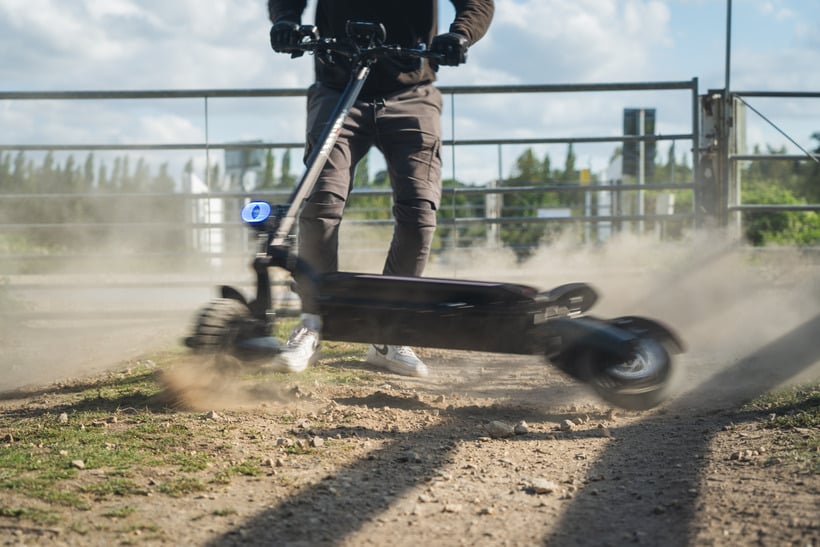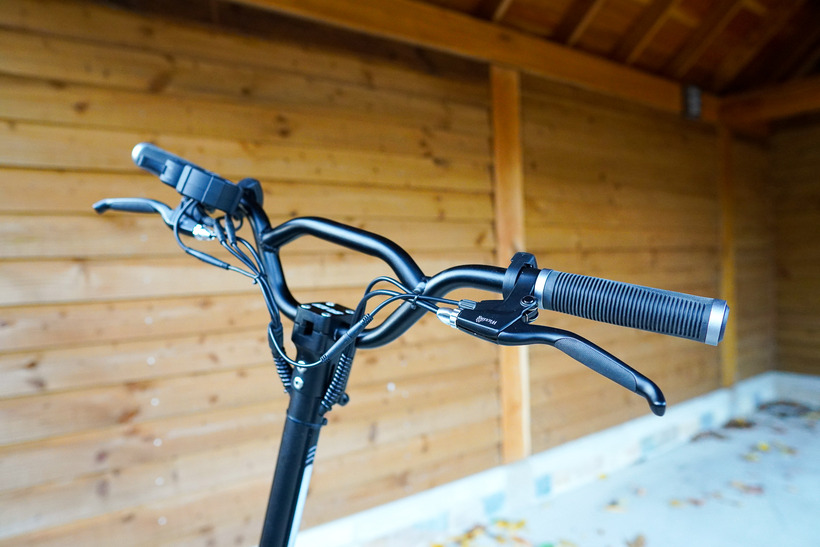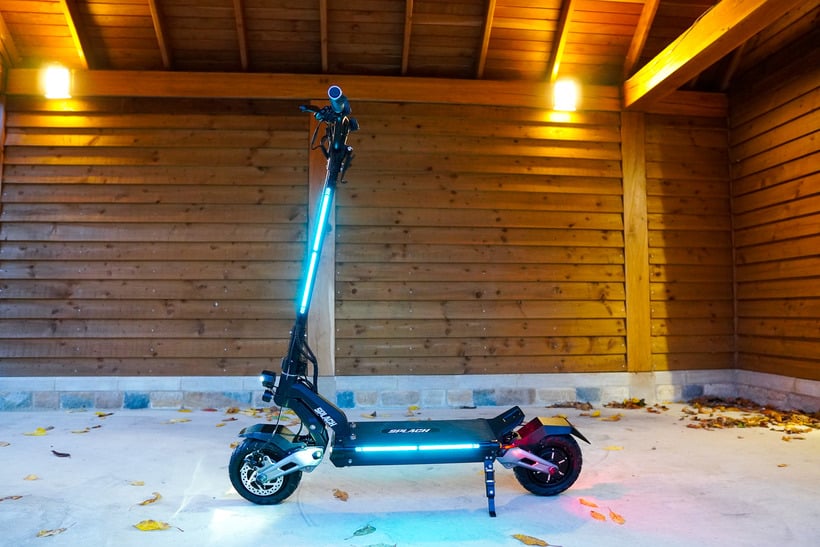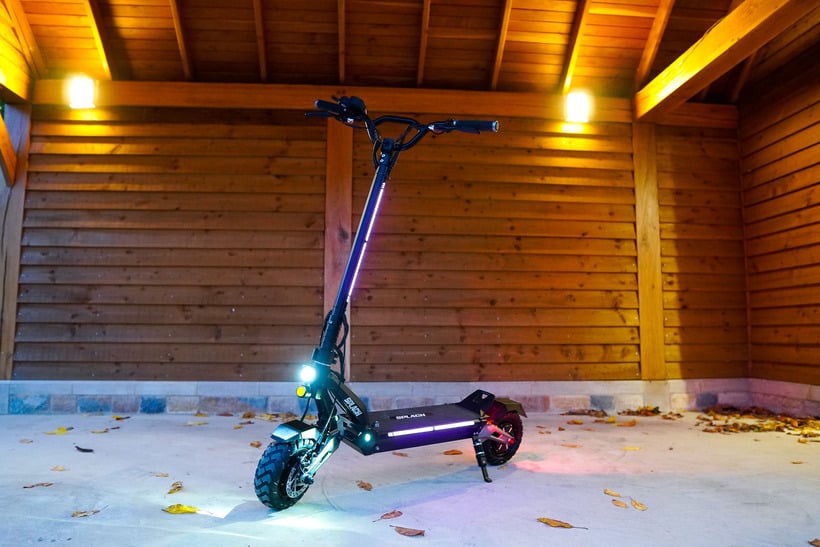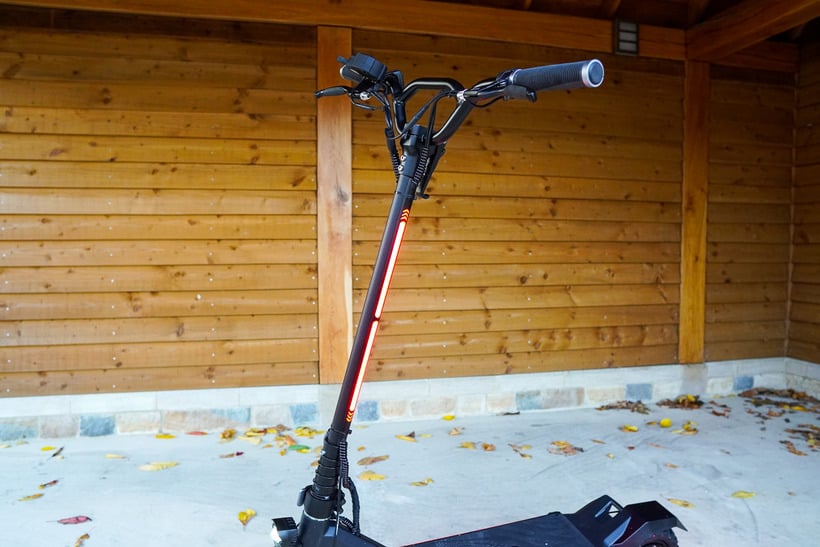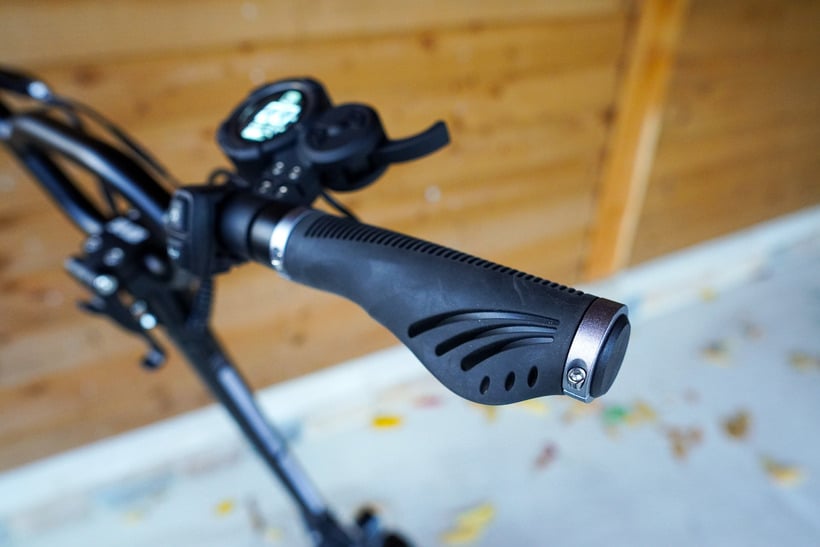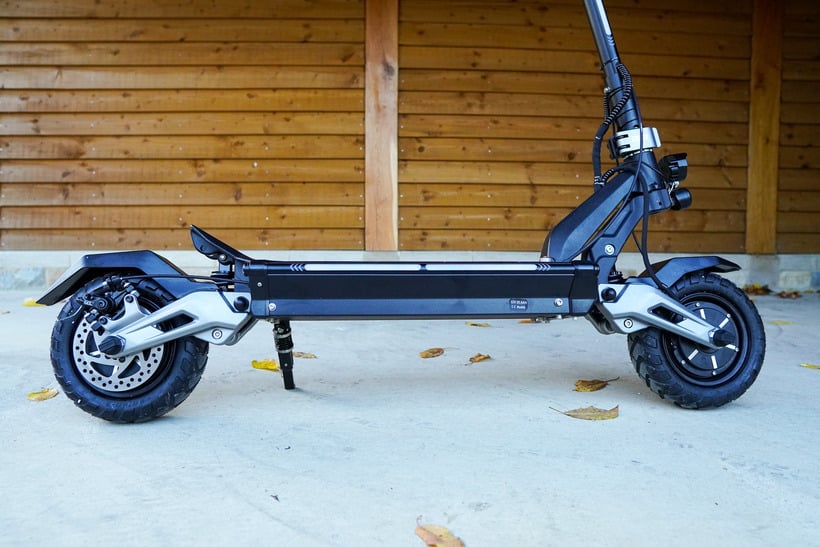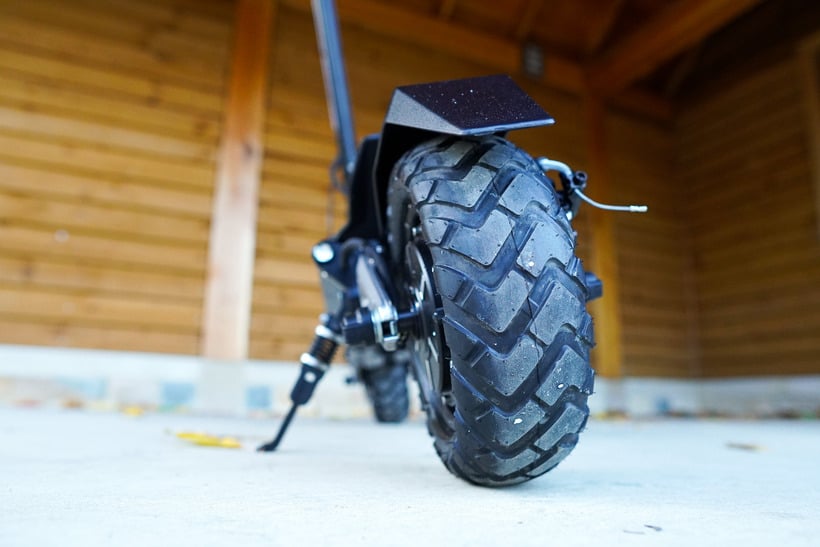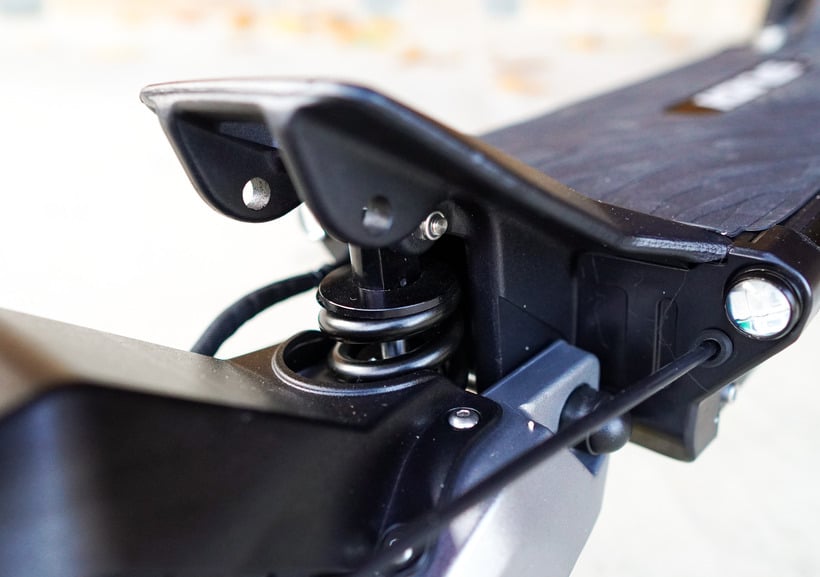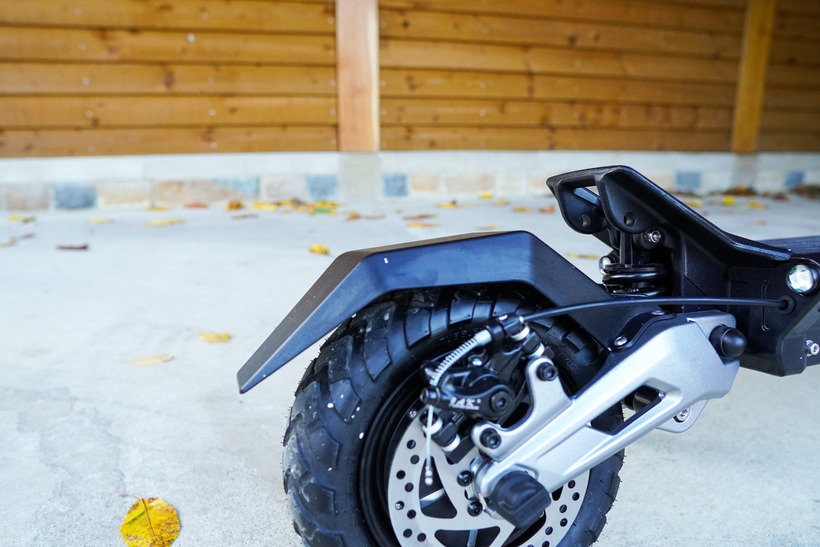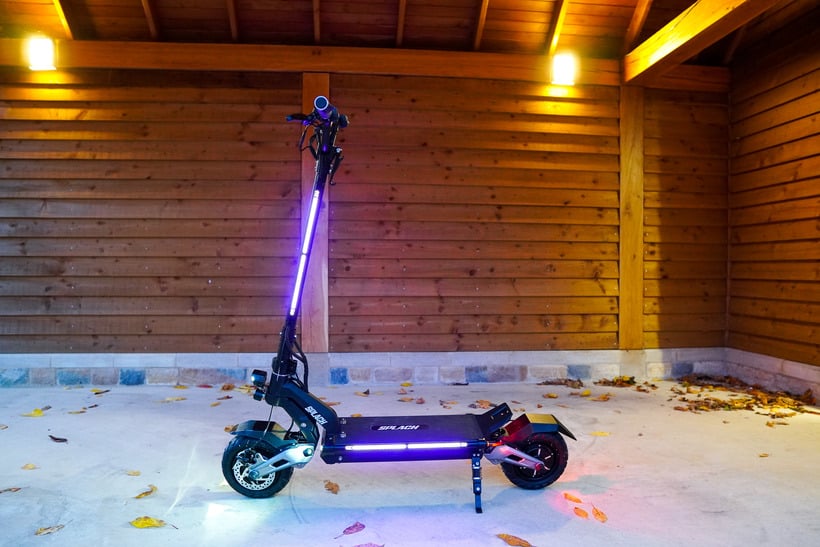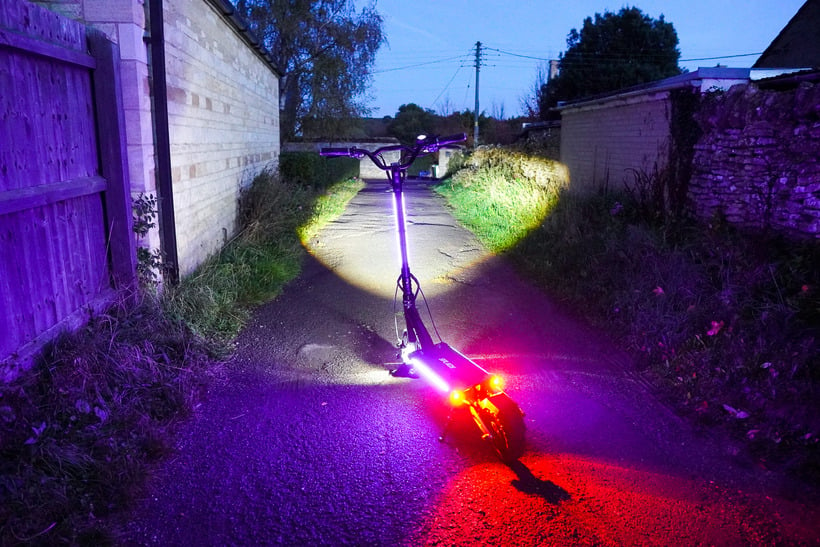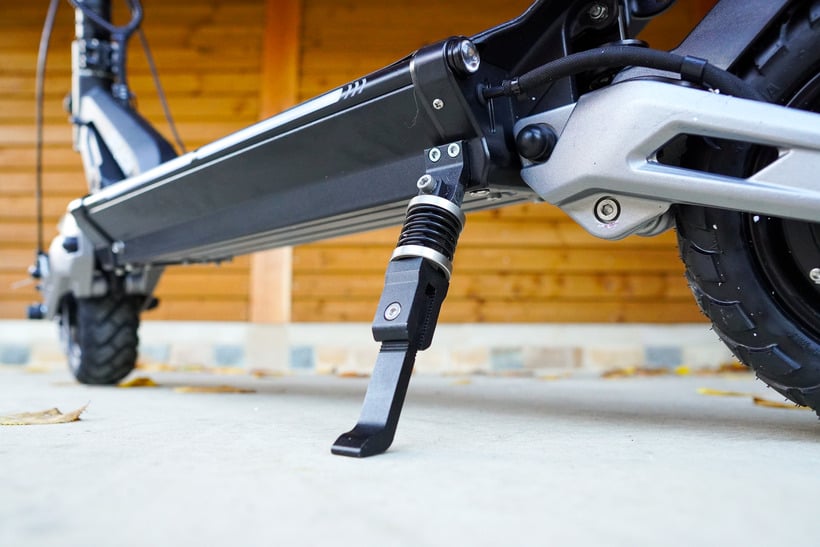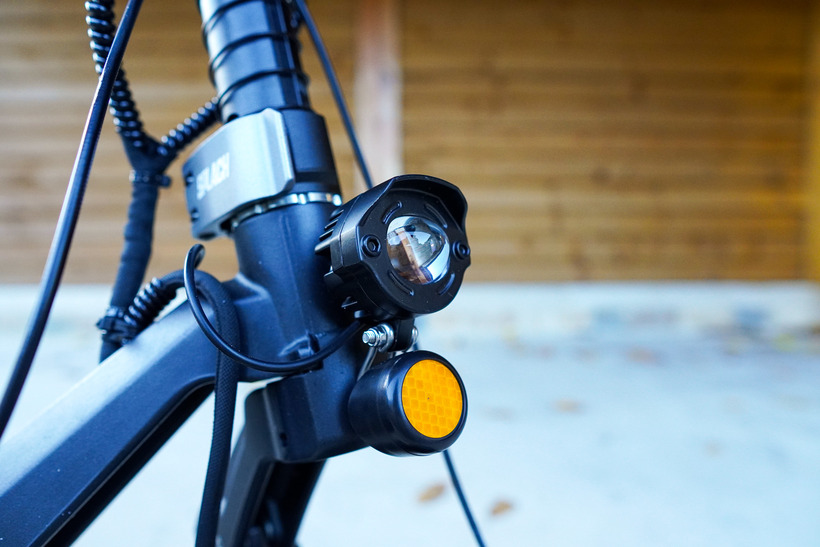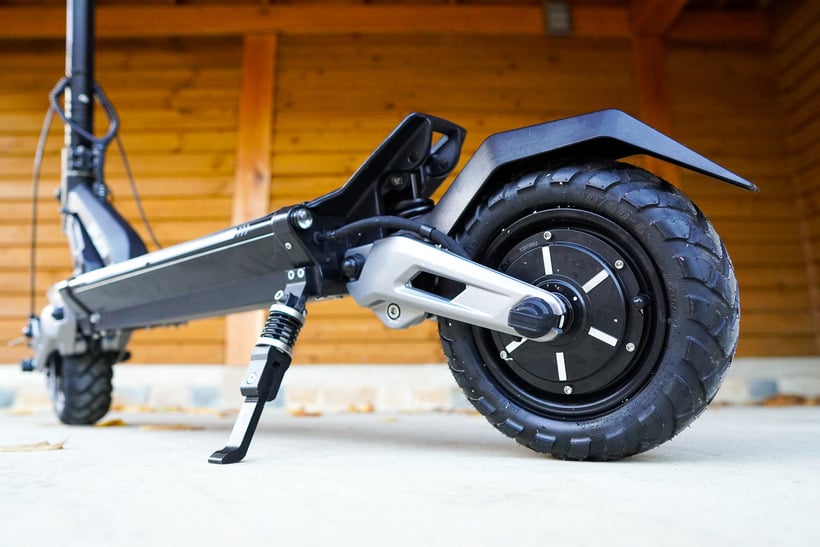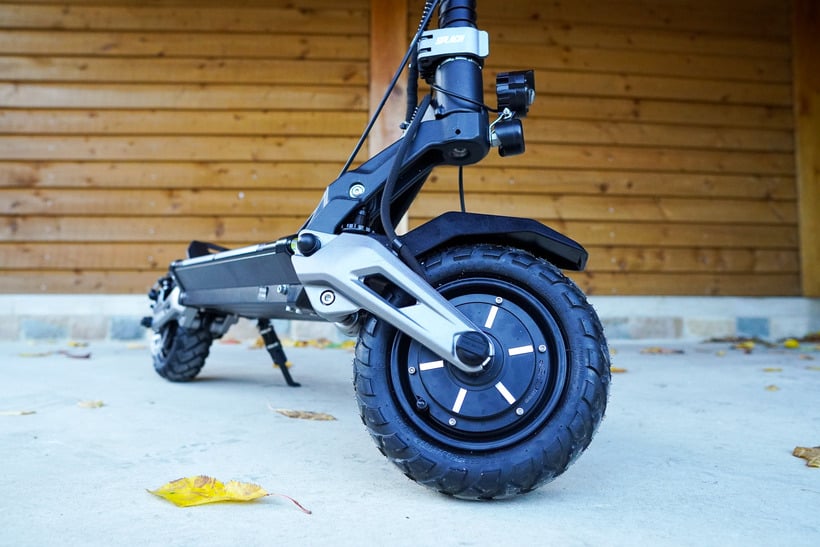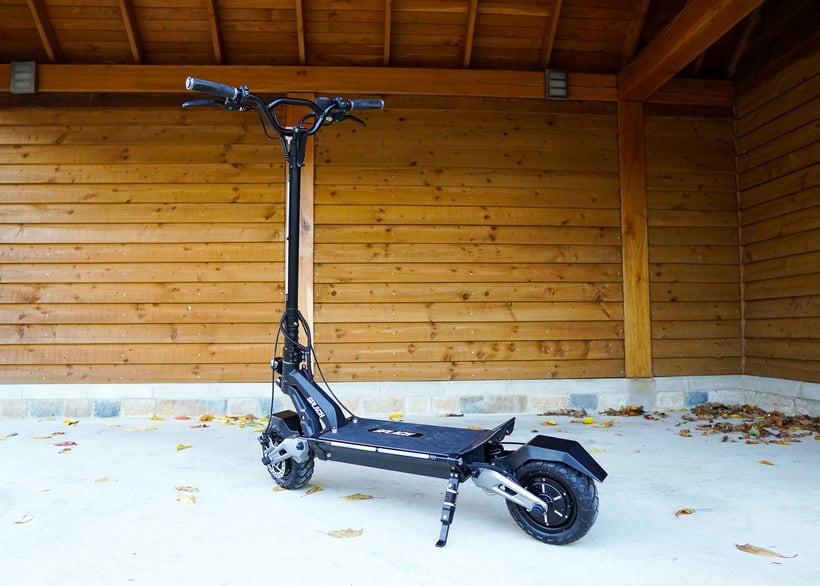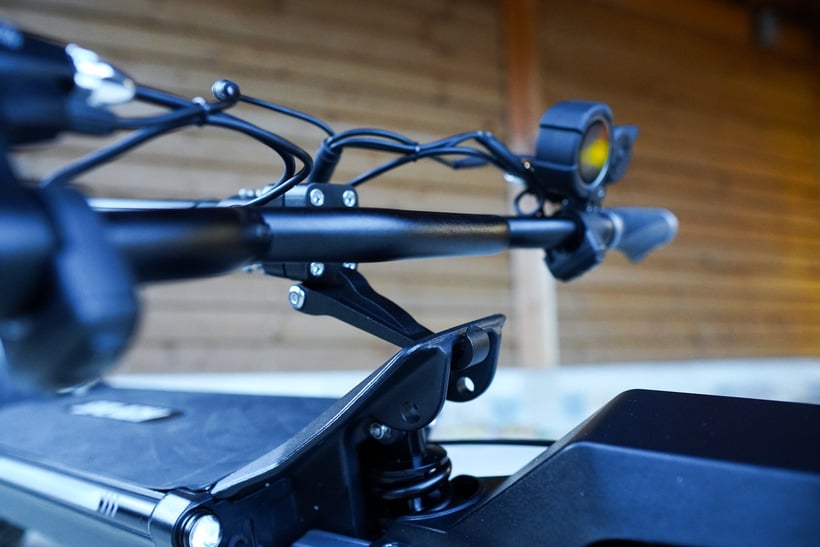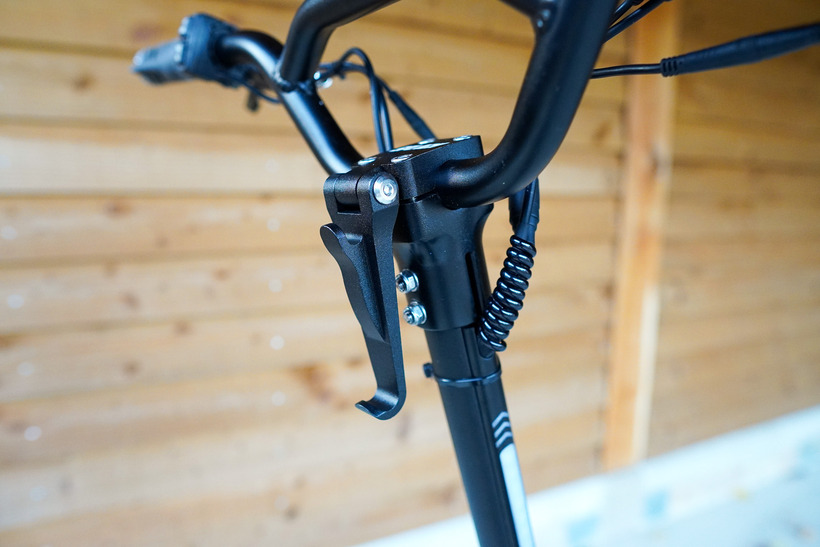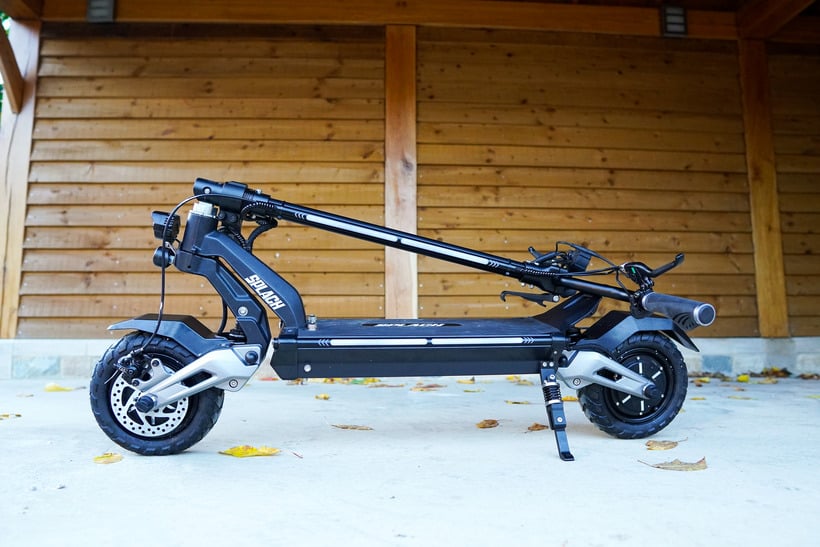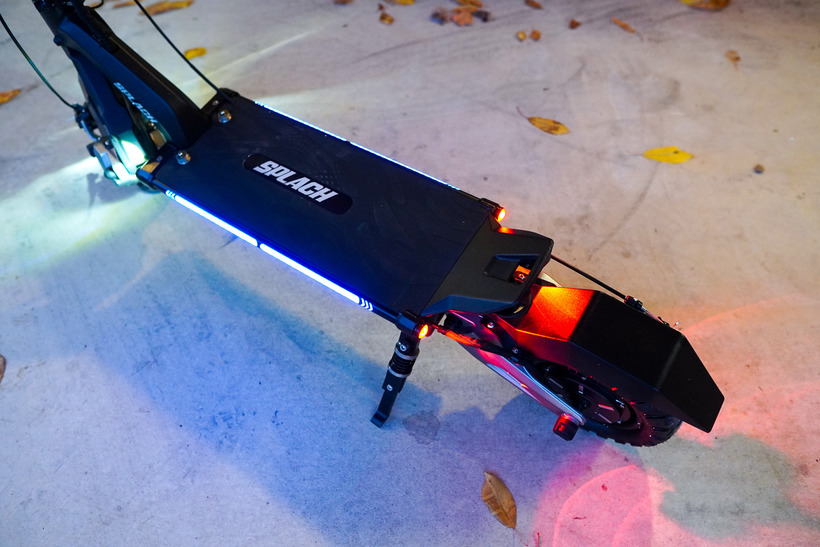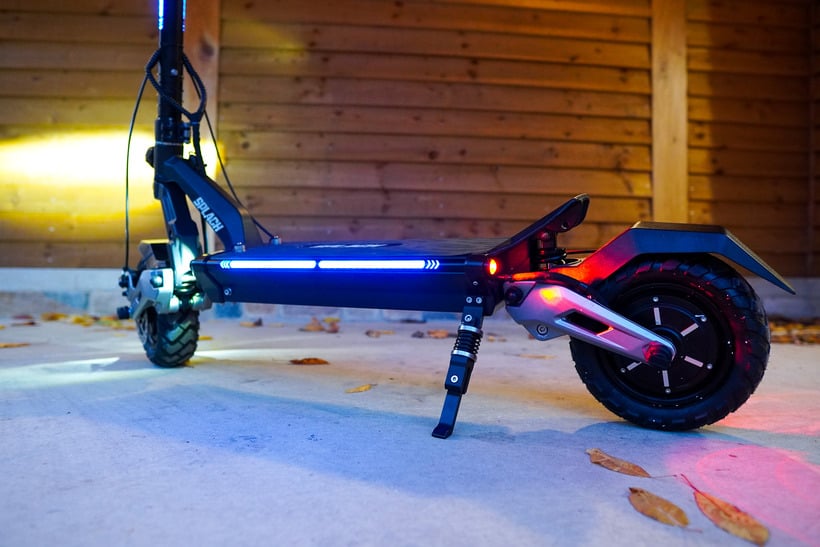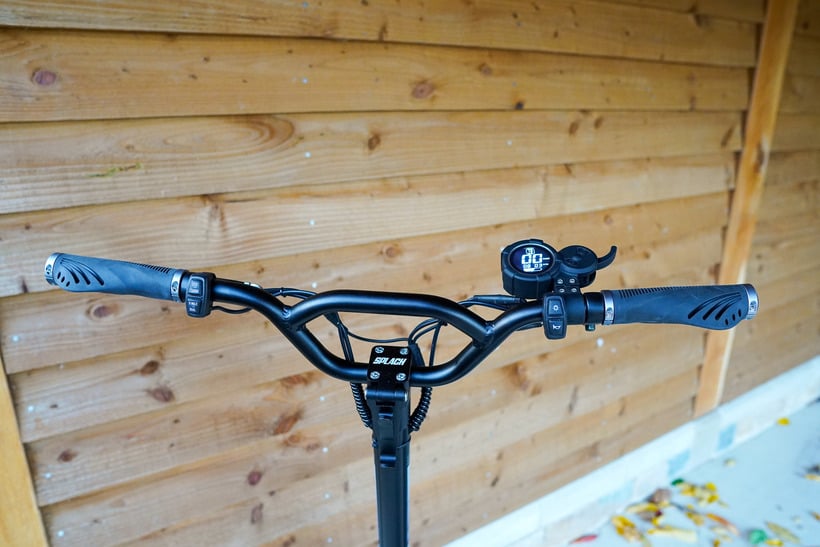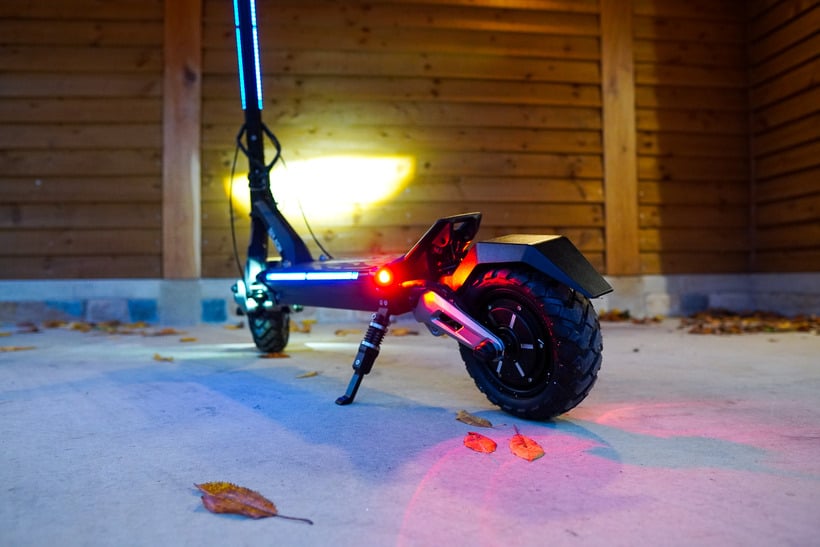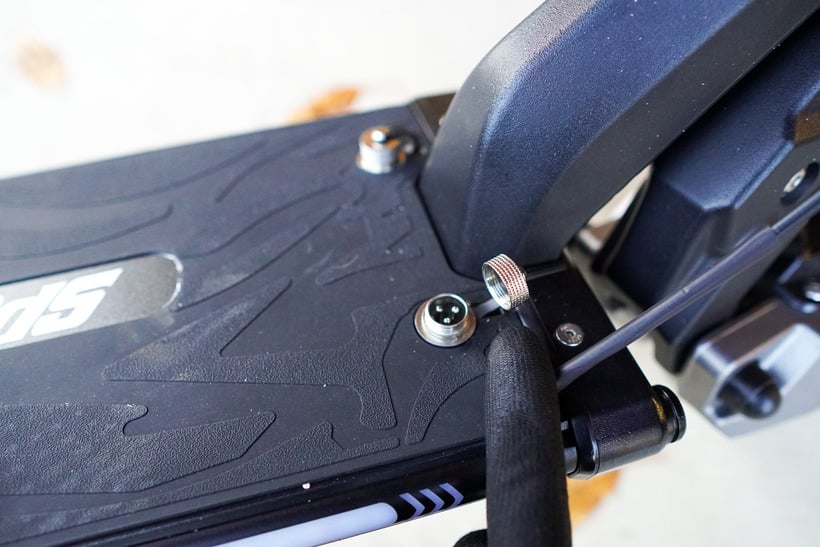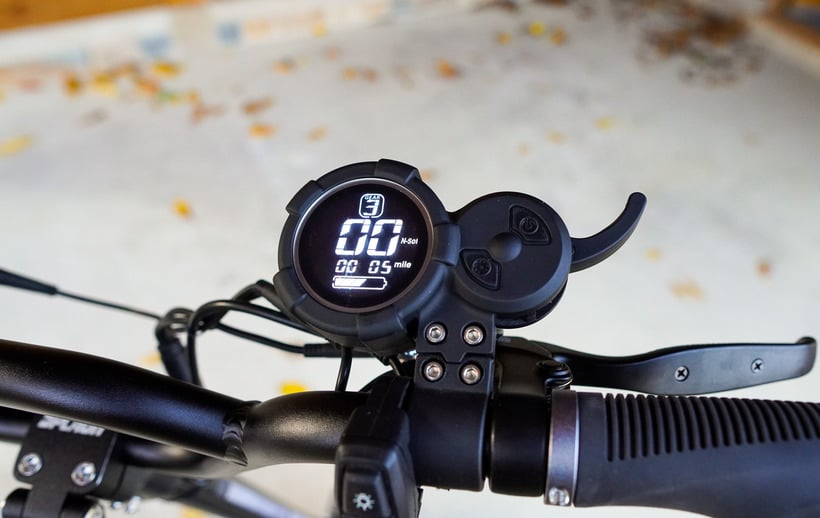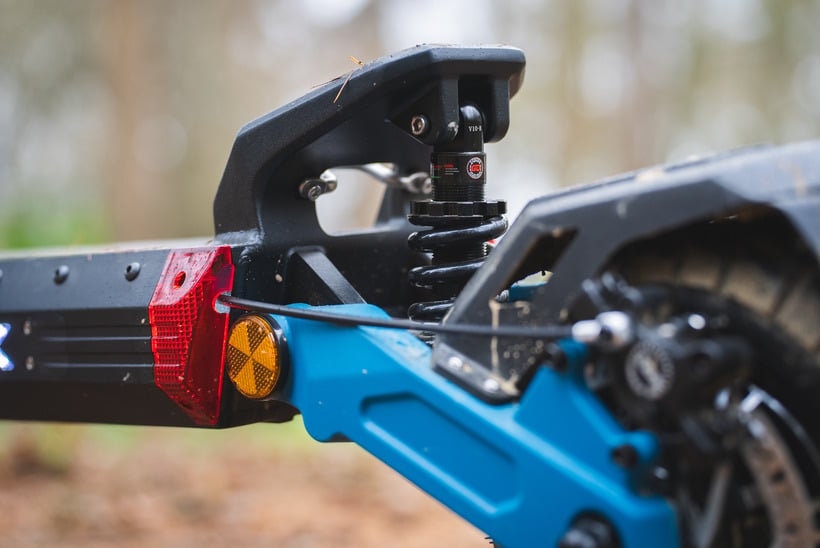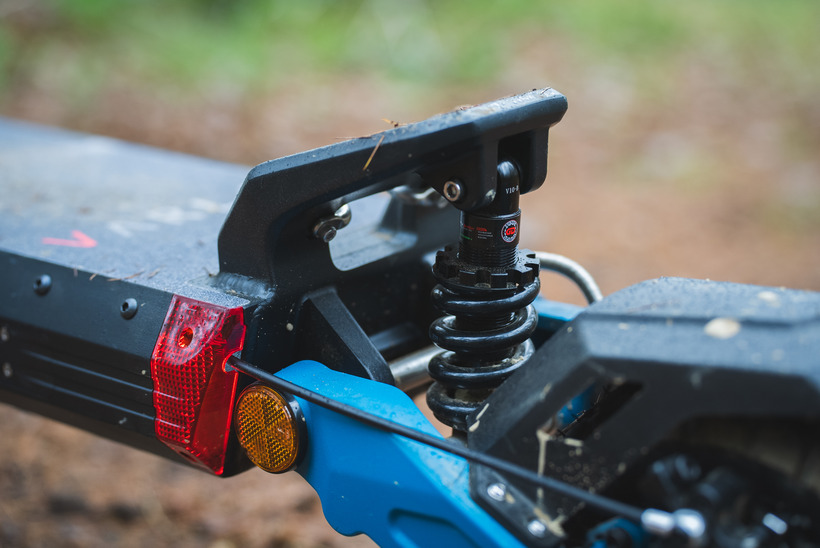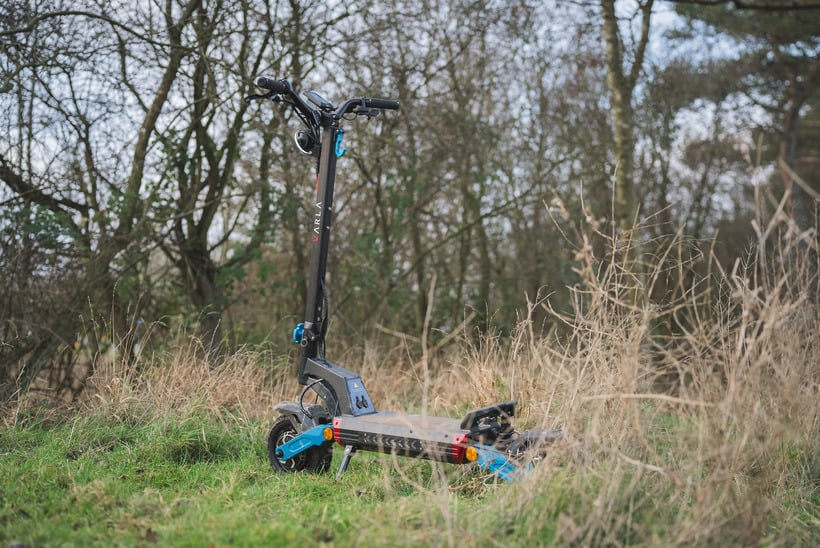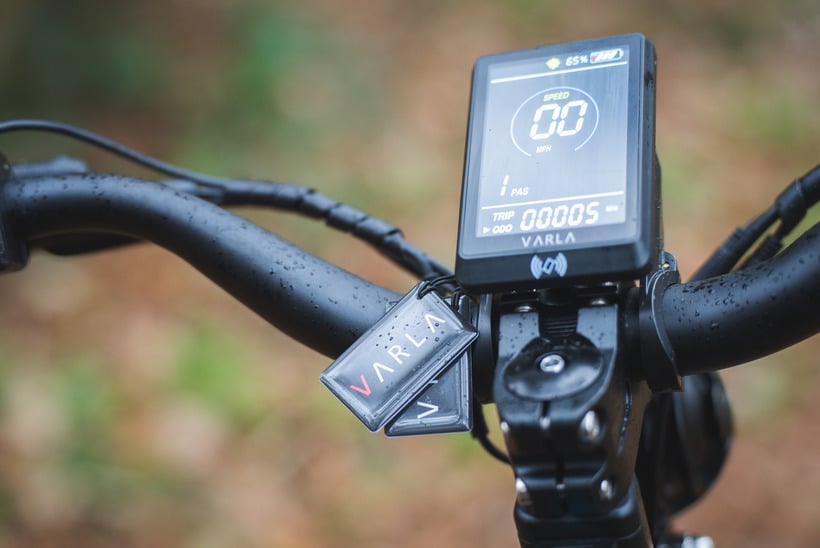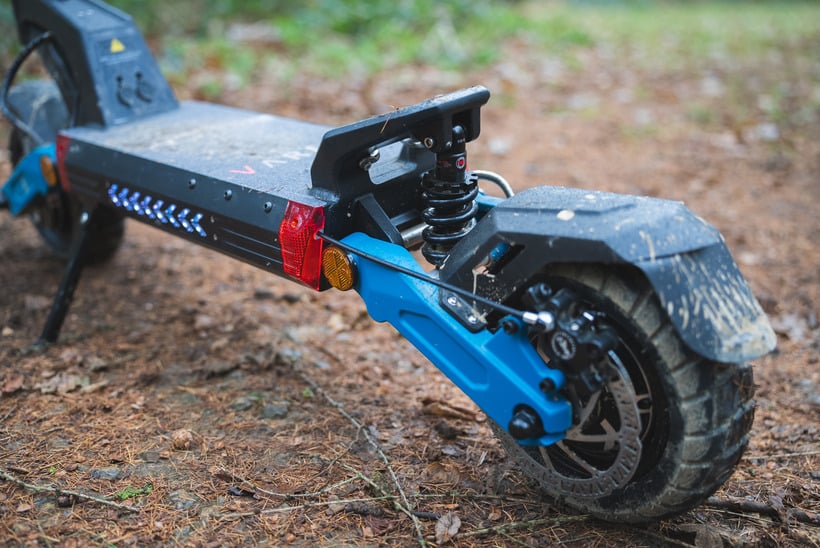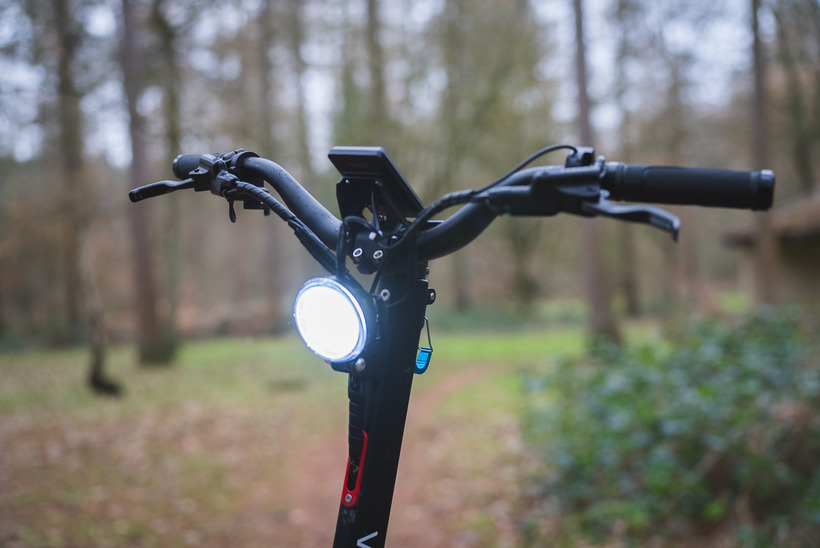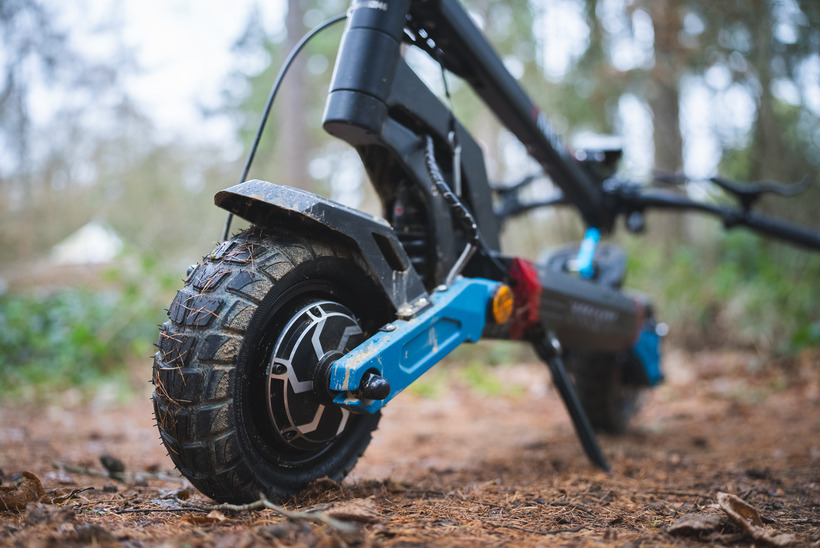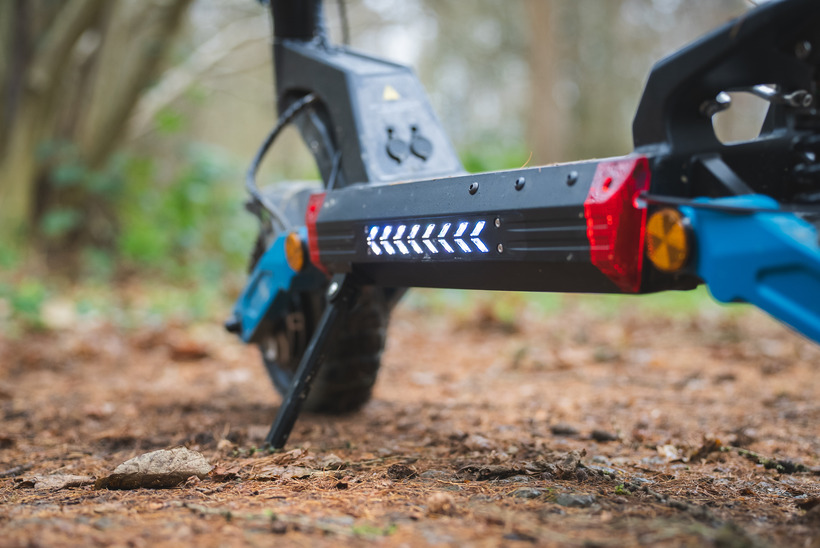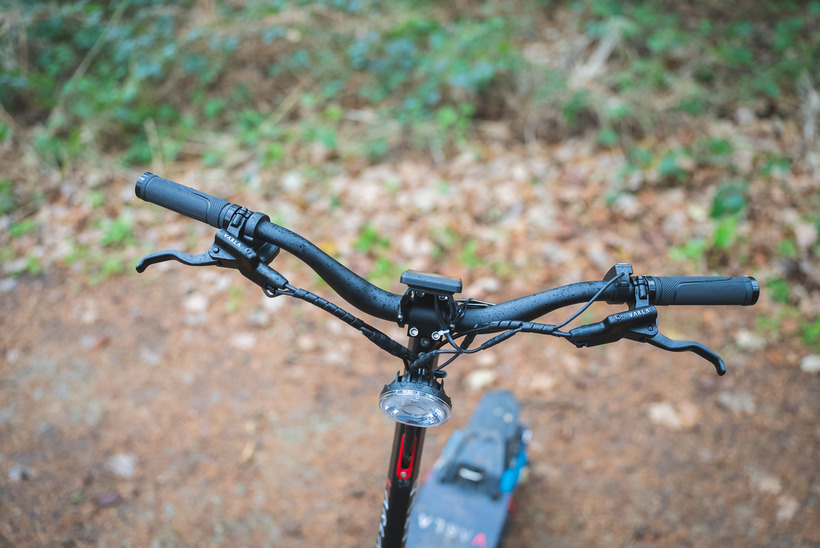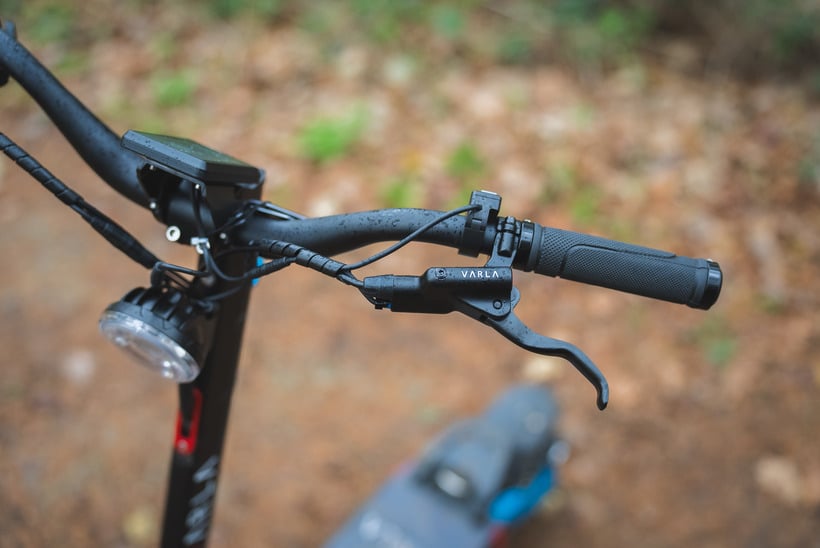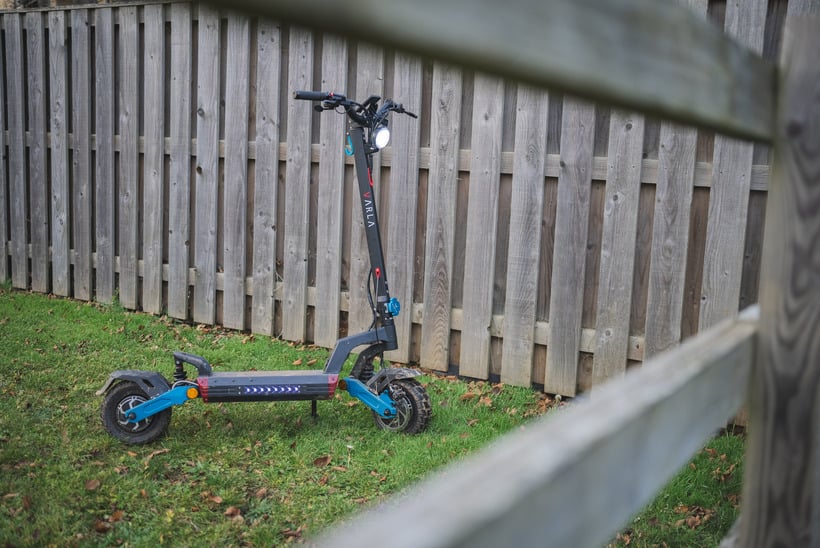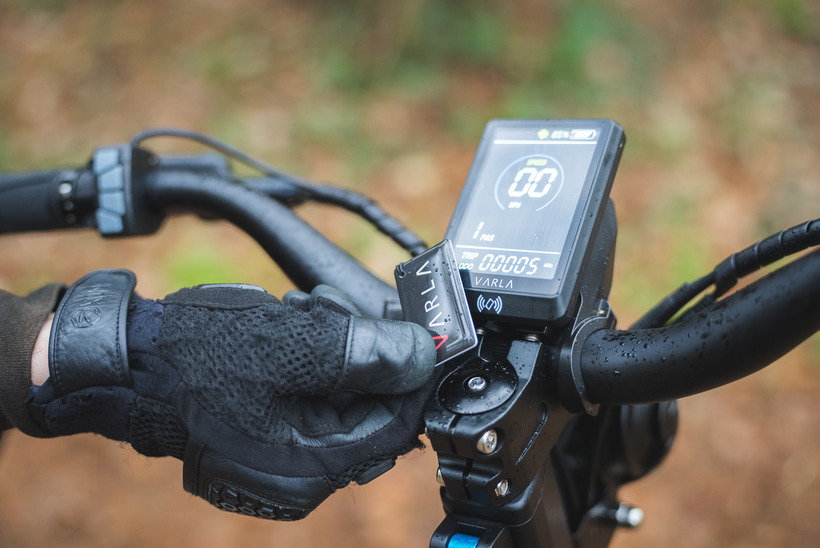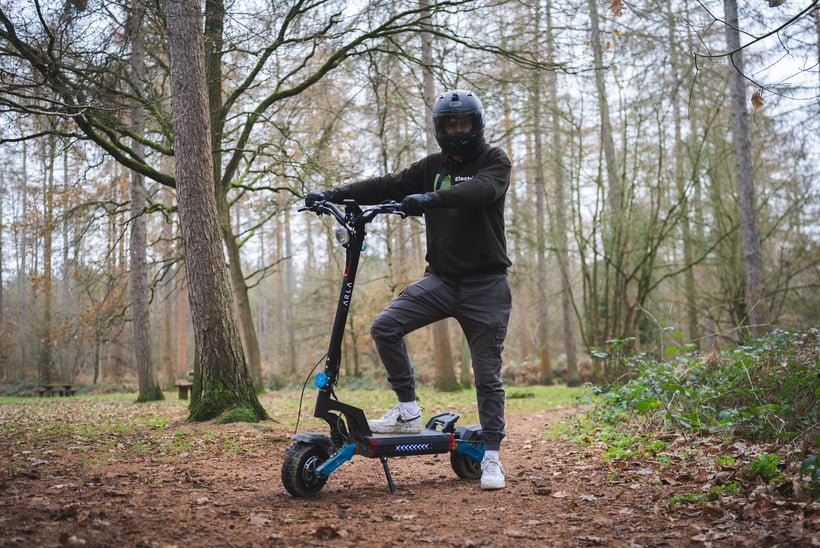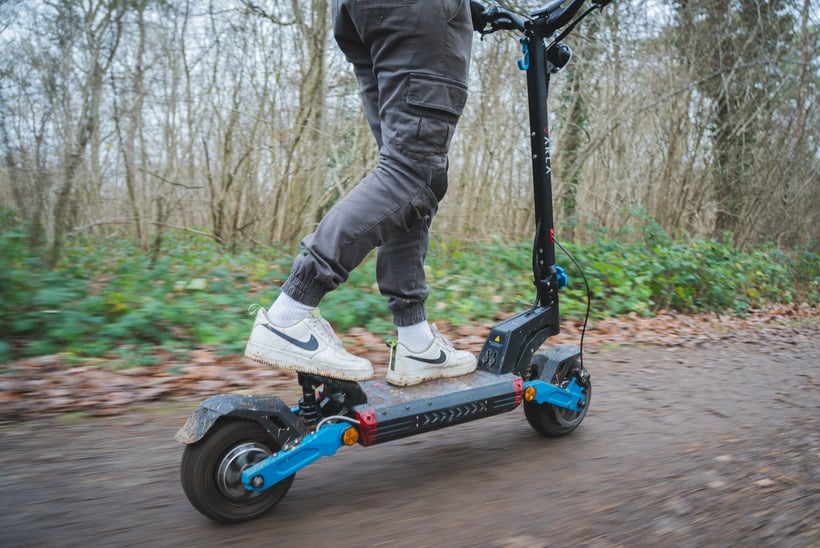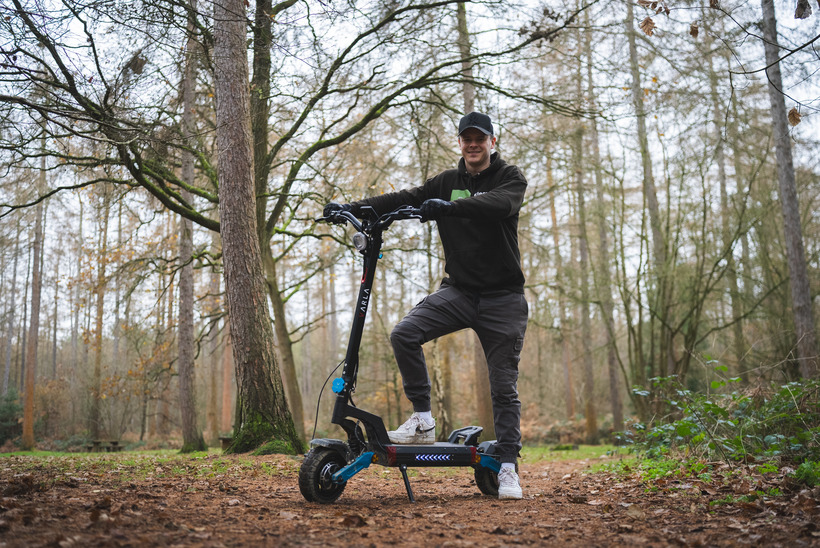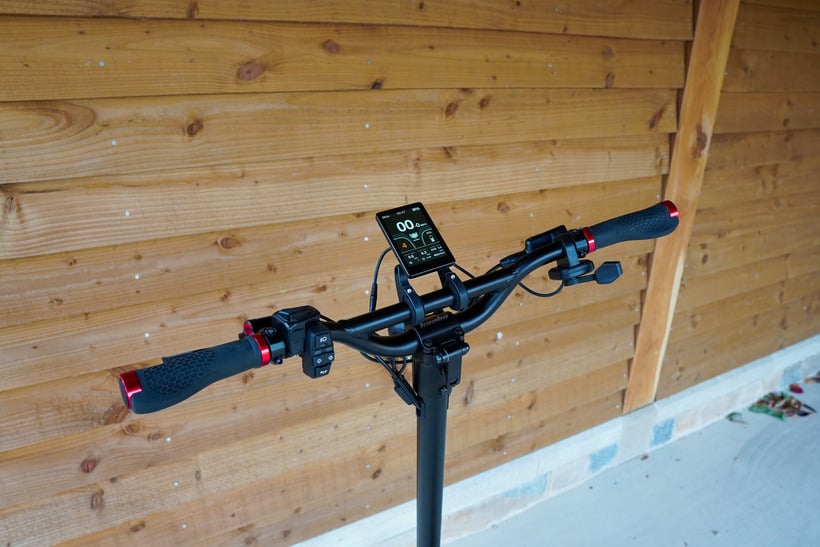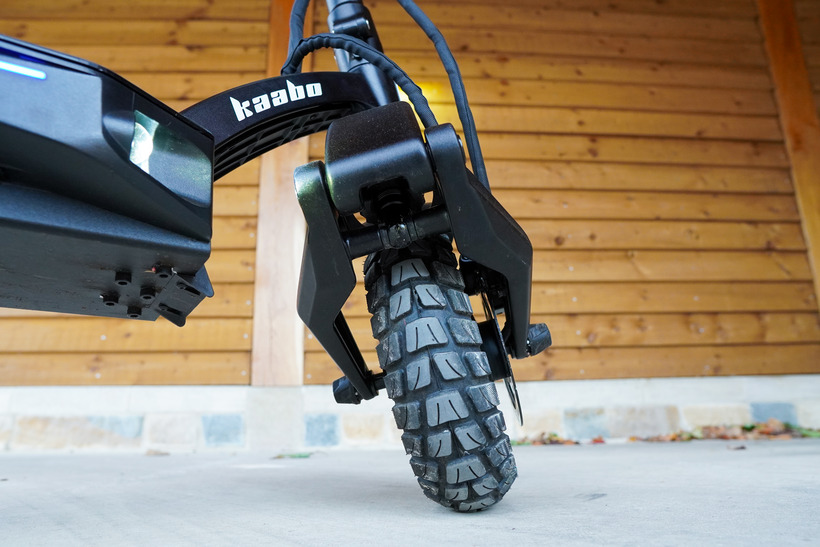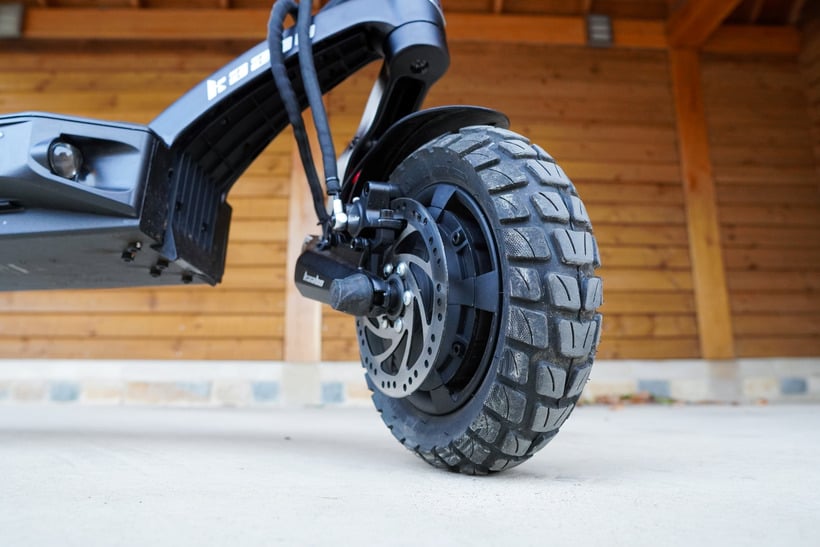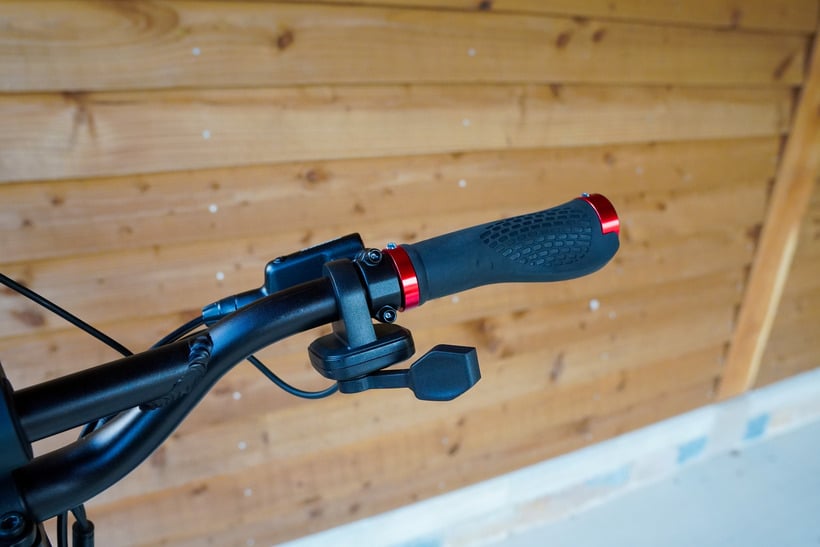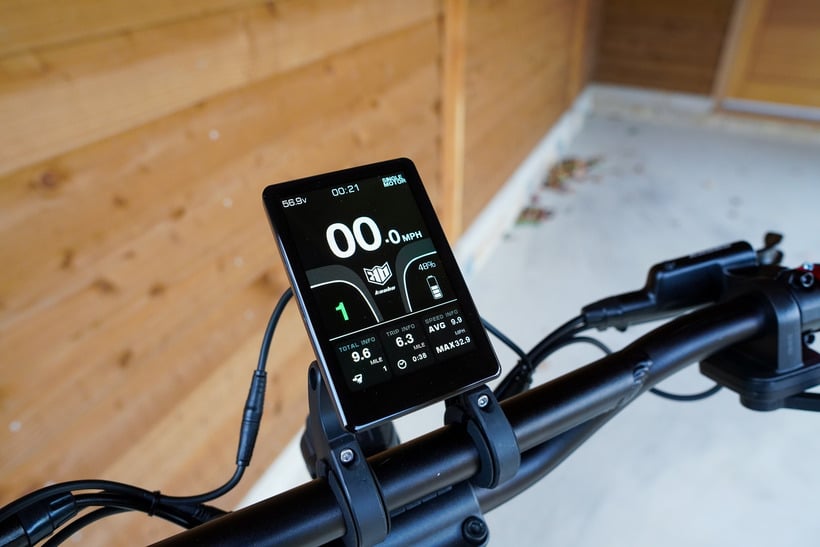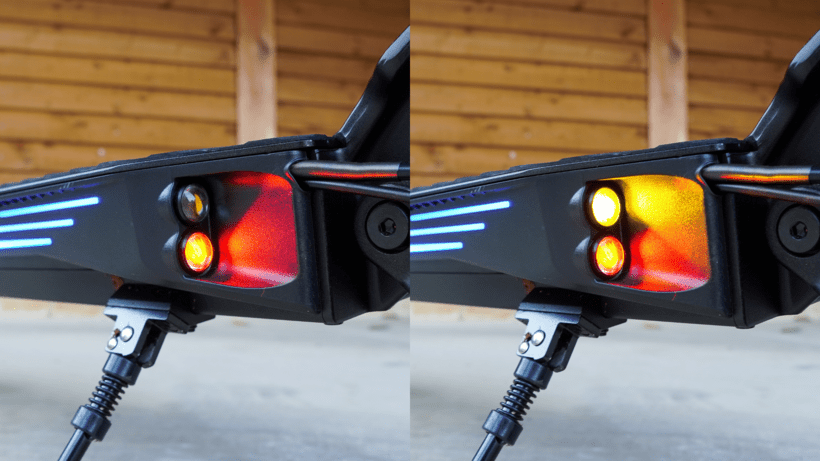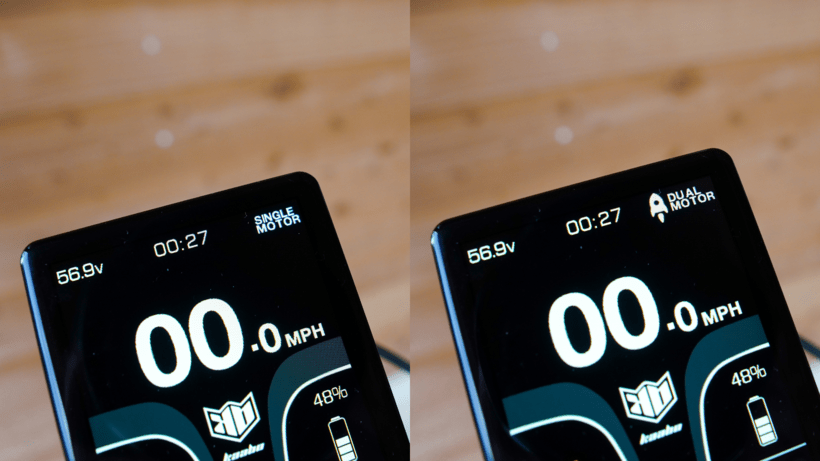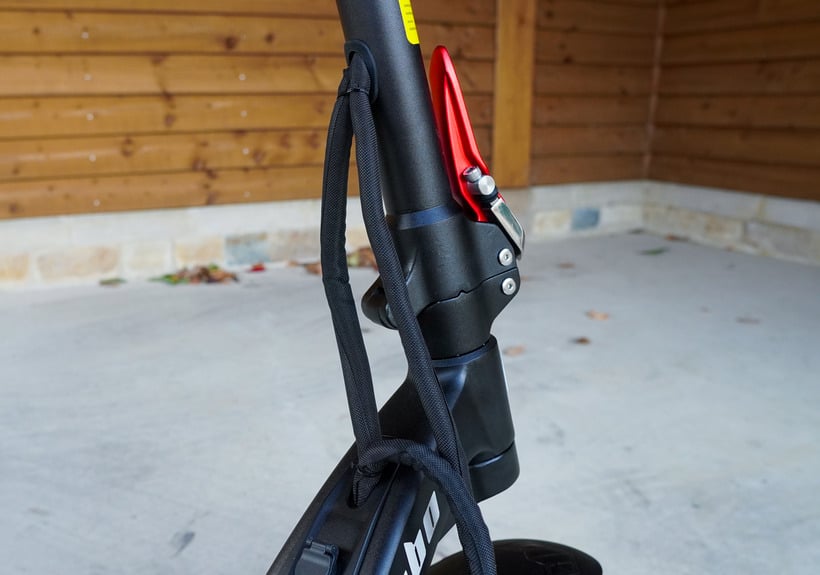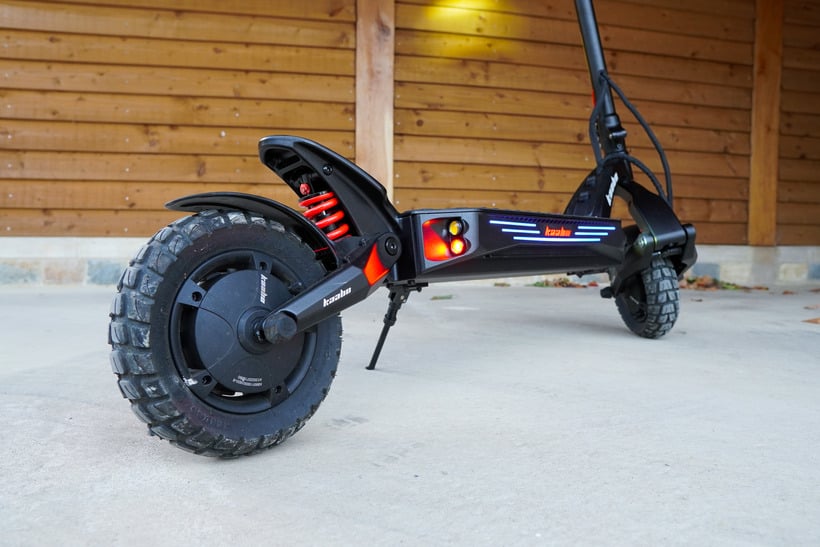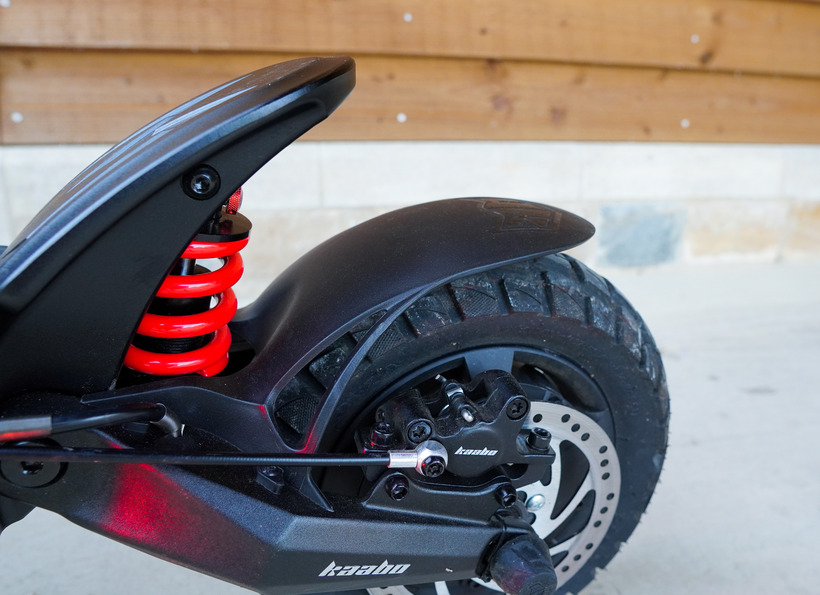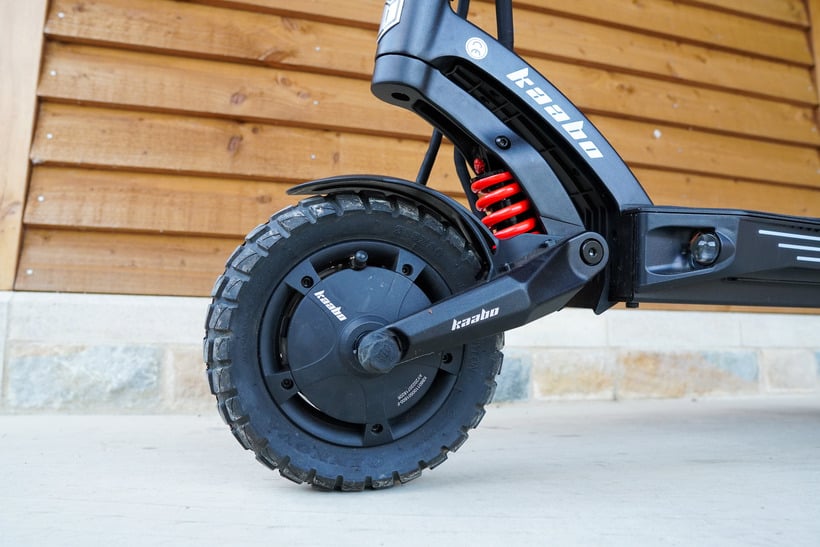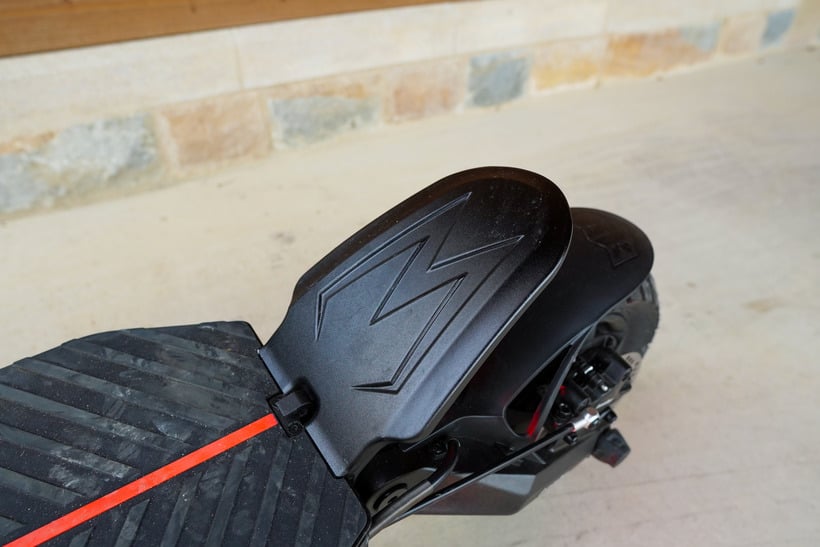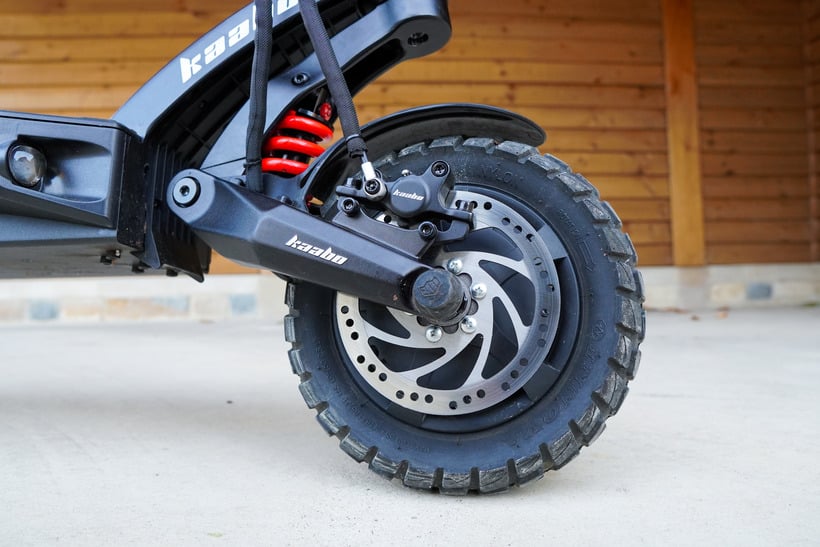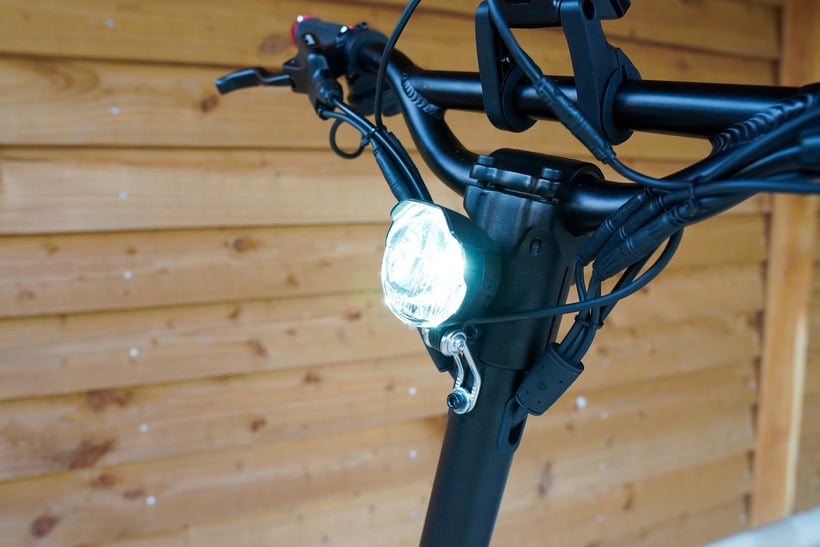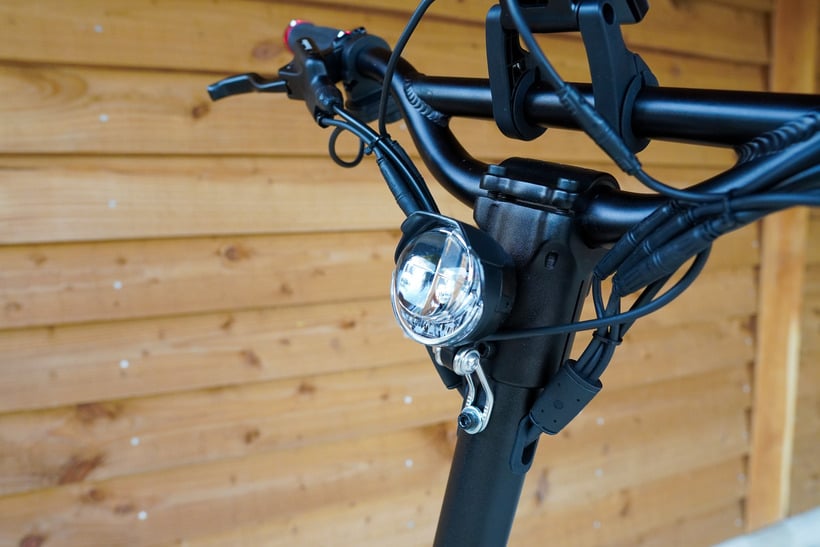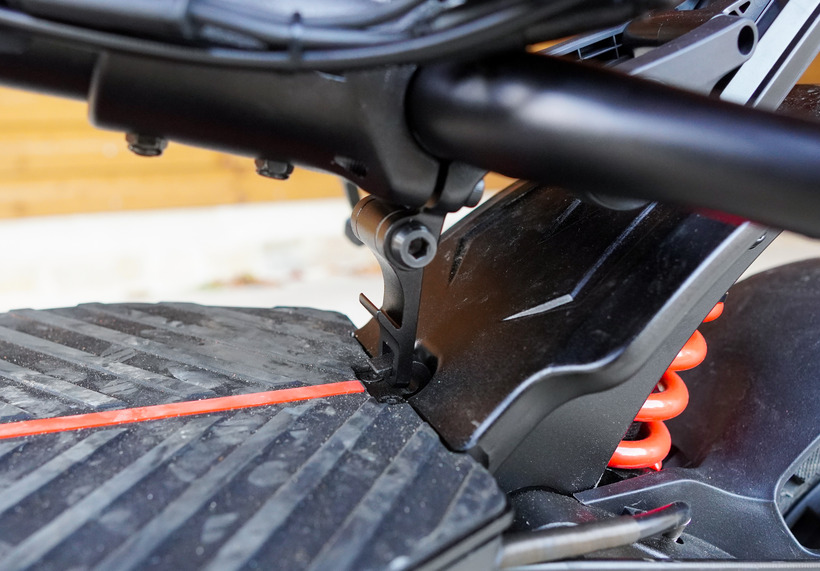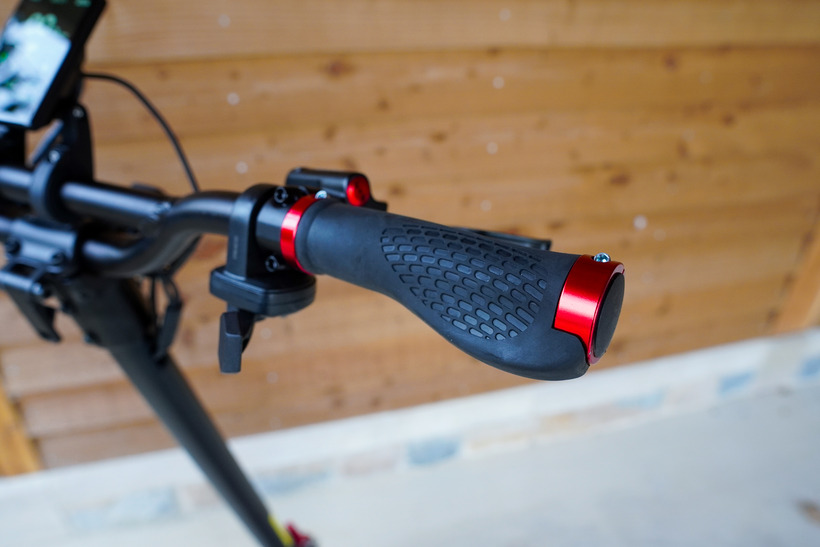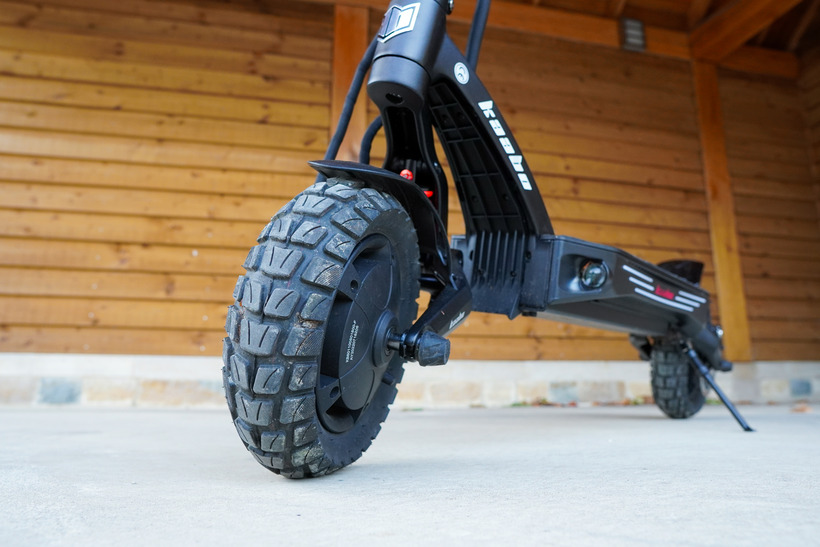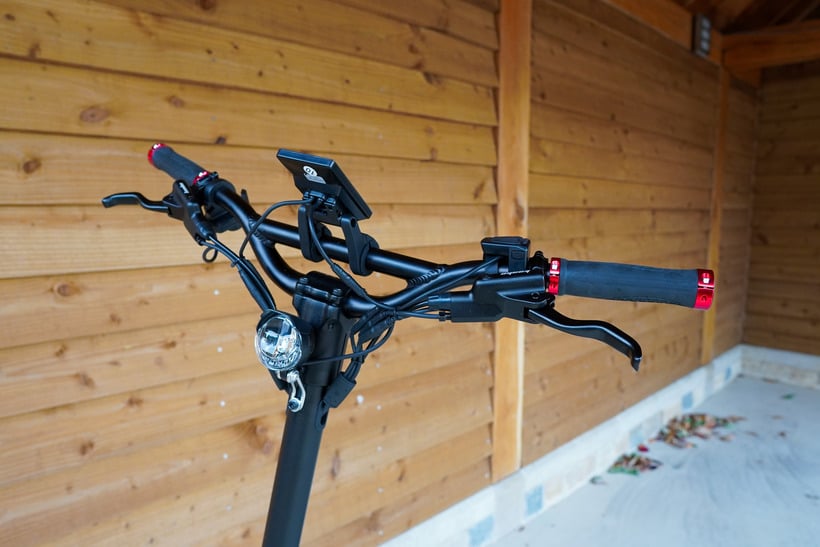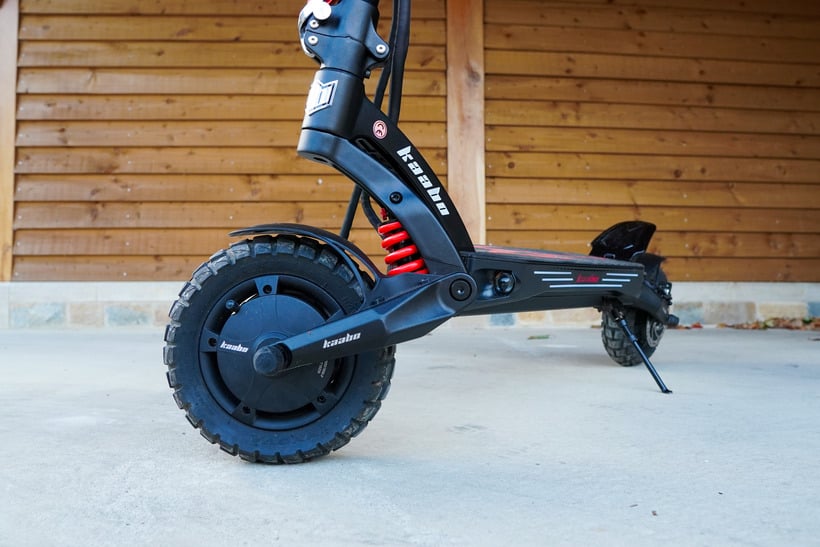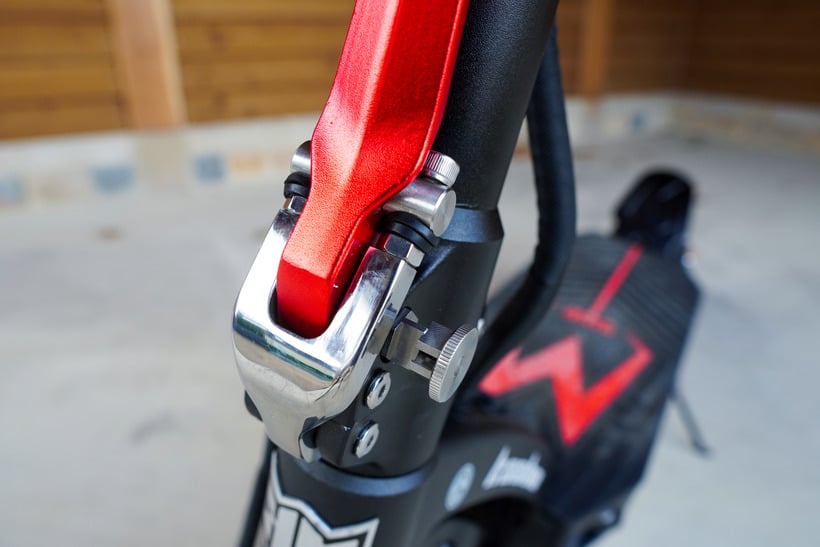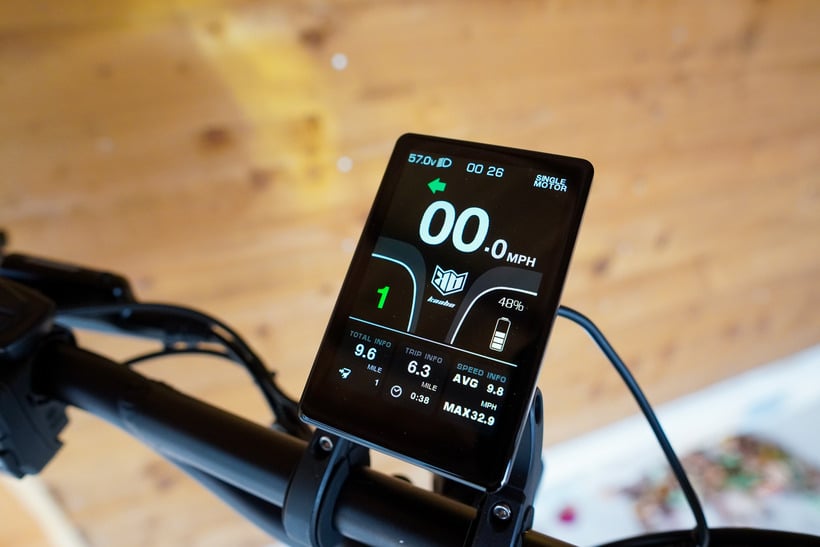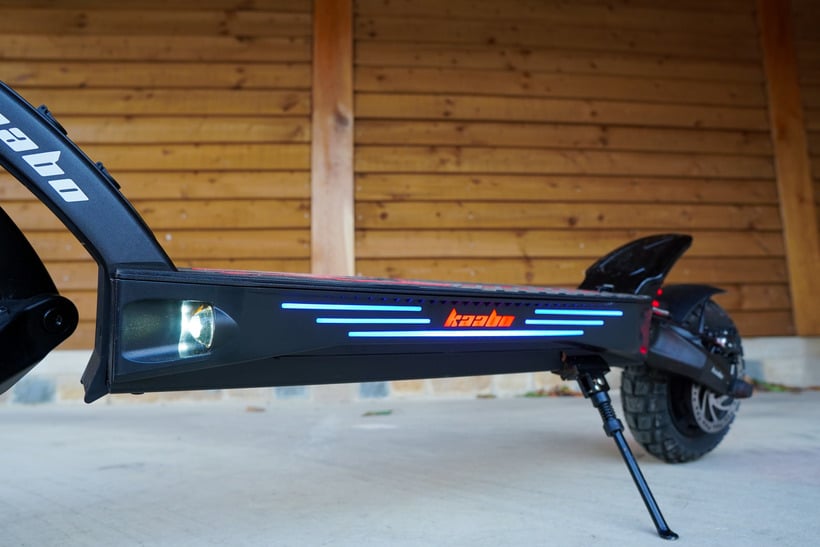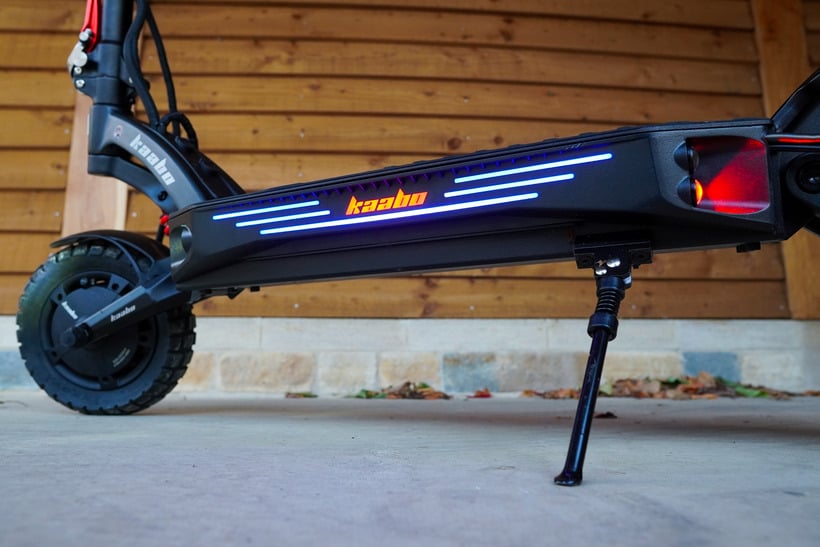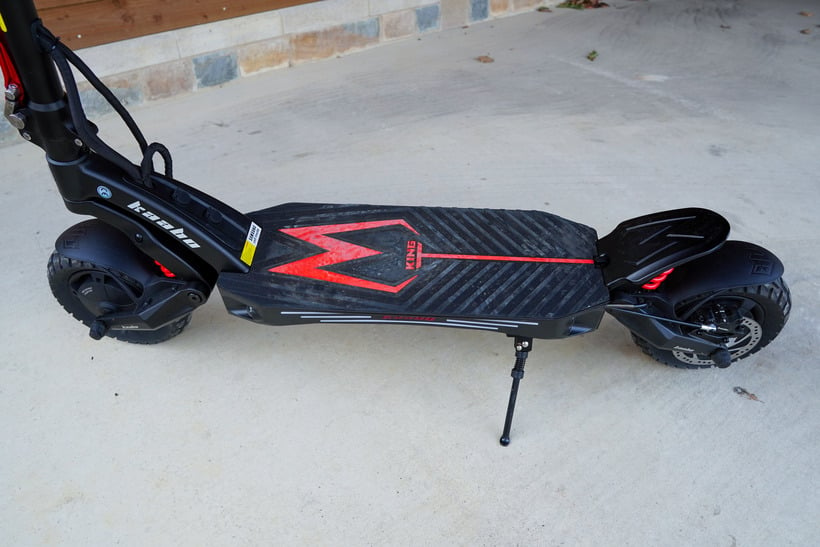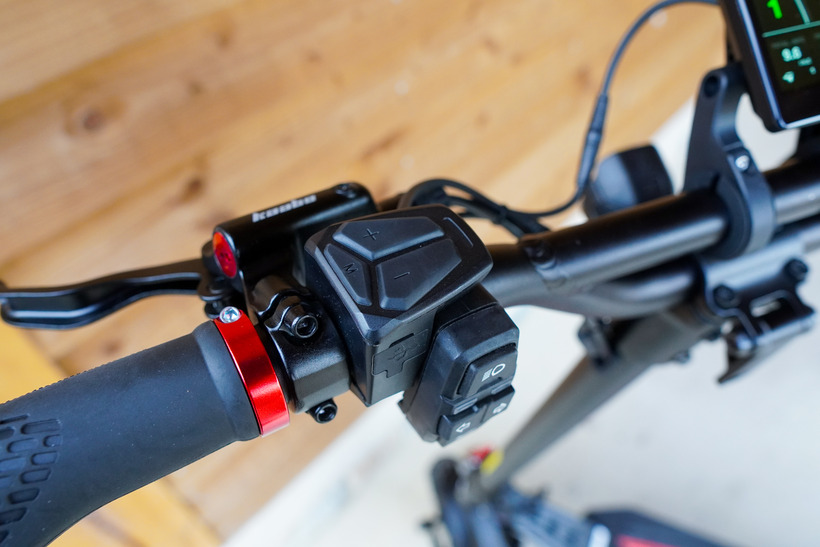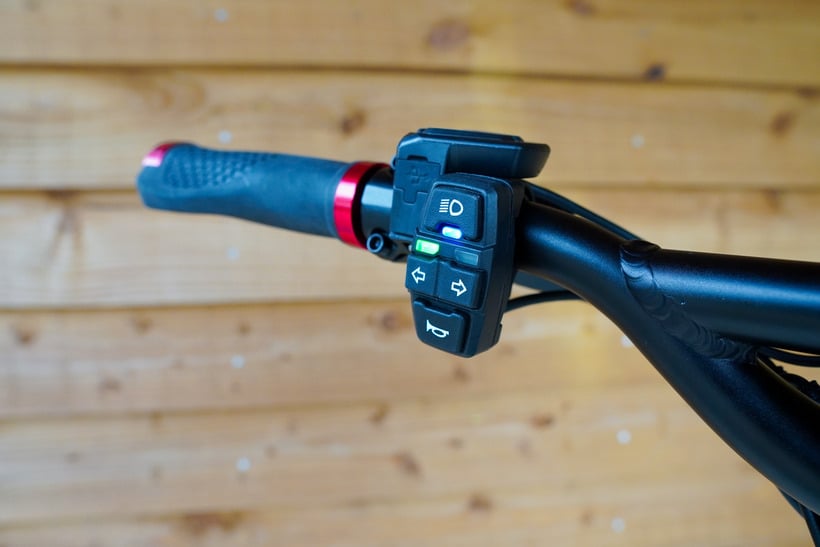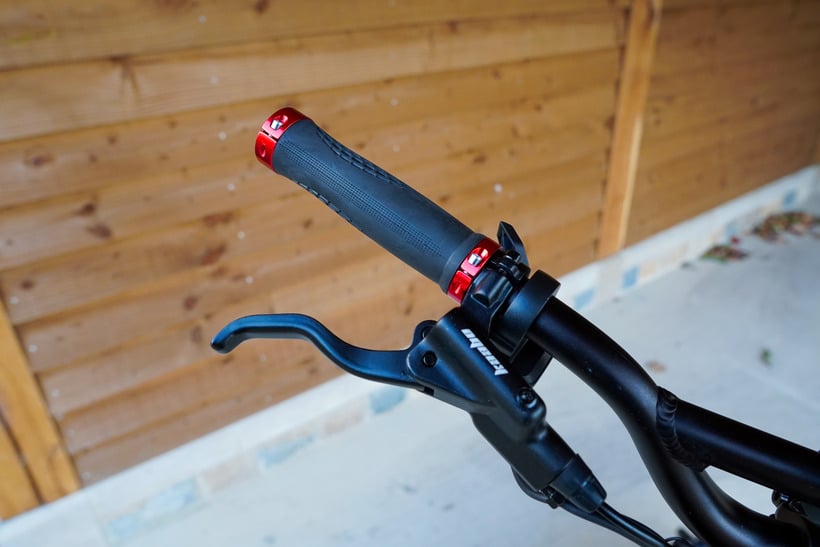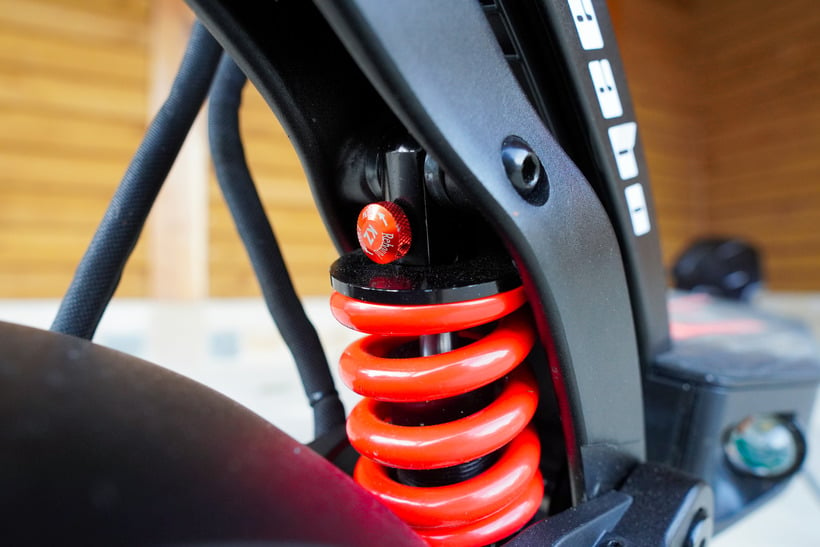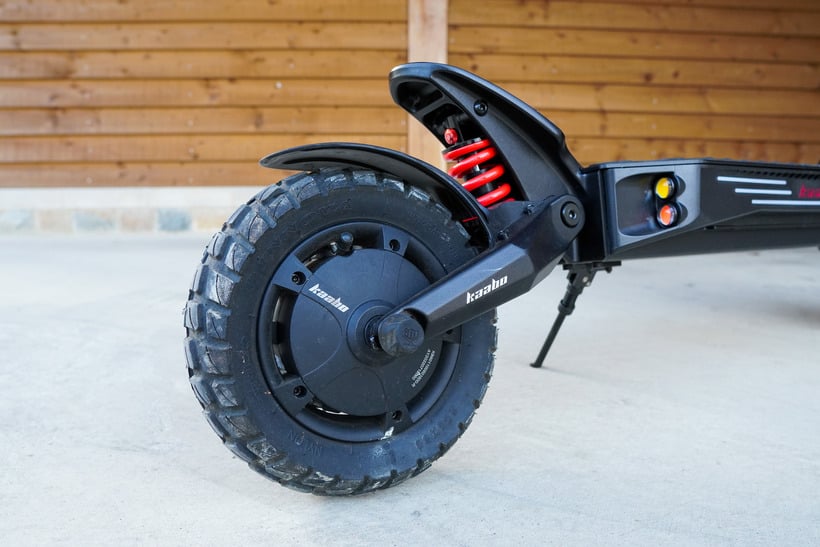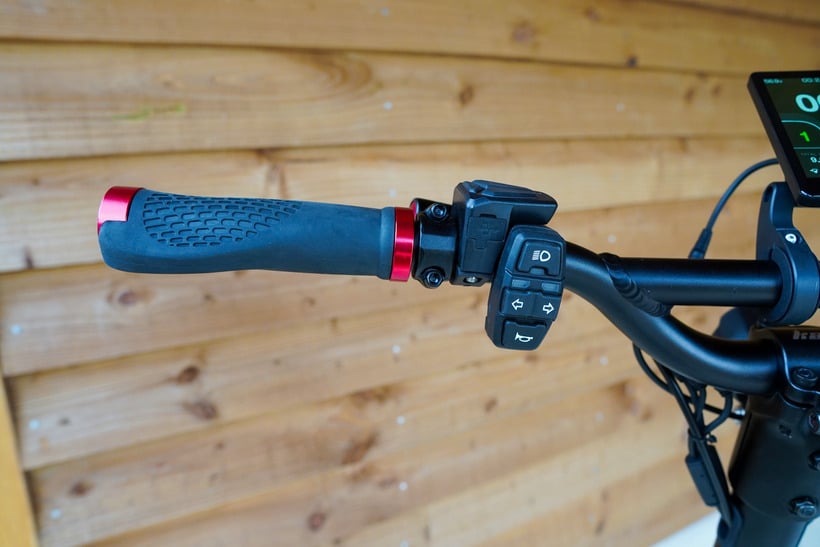Top Picks & Comparison: Best Off-Road Electric Scooters (Quick List)
Quick List: Best Off-Road Electric Scooters
I tested 25 off-road electric scooters to find the 3 best models.
- SPLACH Titan – Best Budget Model
- Varla Eagle One V2 – Best Mid-Range Model
- Mantis King GT – Best Premium Model
Best Off-Road Electric Scooters
Best Budget

SPLACH Titan
Performance Report
Performance Report:
Tester: Josh Frisby (190 lbs, 6.1 ft)
- Top Speed: 37 mph
- Real Speed: 32 mph*
- 0-15 mph: 2.5 s*
- 0-25 mph: 4.9 s*
- 0-30 mph: 9.2 s*
- Max Range: 44 miles
- Real Range: 29 miles*
- Braking: 2.4 meters*
- Suspension: 8.5/10*
- Max Incline: 20 degrees
- Optimal Incline: 12 degrees*
- Weight: 64 lbs
- Load: 220 lbs
Pros & Cons
The Good:
- Outstanding value for money
- Chart-topping performance in its price class and beyond
- Supremely smooth suspension
- Handles all types of terrain
- Fat tires with terrain-agnostic tread
- One of the best lighting packages in the industry
- Excellent for long-range rides
- Superb folding mechanism
- Sharp and responsive brakes
- Secret hiding spot for an Apple Air Tag
- IP54 water-resistance rating
The Bad:
- Deck is a little short
- Higher load capacity would make it more accessible to heavy riders
Video Review
Photos
Best Mid-Range

Varla Eagle One V2
Performance Report
Performance Report:
Tester: Josh Frisby (197 lbs, 6.1 ft)
- Top Speed: 40 mph
- Real Speed: 36.1 mph*
- 0-15 mph: 2.3 s*
- 0-25 mph: 5.8 s*
- 0-30 mph: 9.3 s*
- Max Range: 42 miles
- Real Range: 24.4 miles*
- Braking: 2.0 meters*
- Suspension: 8/10*
- Max Incline: 30 degrees
- Optimal Incline: 18 degrees*
- Weight: 82 lbs
- Load: 330 lbs
Pros & Cons
The Good:
- Top contender in its price class
- Packed full of features
- Extremely well-rounded performance
- Great value for money
- Powerful, yet tameable
- All-terrain powerhouse
- Plush suspension that’s primed for differing terrain
- Handling, control, and maneuverability are all assured
- Throttle response is super smooth thanks to the Sine Wave controllers
- Rock-solid stem thanks to super secure folding mechanism
- Suitable for tall and heavy riders
- Large, bright, and easy-to-read display
- NFC card reader for enhanced security
- Lights are sufficient for night rides
- Sharp and responsive dual hydraulic brakes
- IP54 water resistance rating
The Bad:
- The deck is short, but the well-designed kickplate adds an extra 5.1 inches of space
- The grip tape quickly becomes dirty and is hard to clean
Video Review
Photos
Best Premium

Mantis King GT
Performance Report
Performance Report:
Tester: Josh Frisby (190 lbs, 6.1 ft)
- Top Speed: 43 mph
- Real Speed: 45 mph*
- 0-15 mph: 1.9 s*
- 0-25 mph: 4.0 s*
- 0-30 mph: 5.7 s*
- 0-35 mph: 7.8 s*
- Max Range: 56 miles
- Real Range: 38 miles*
- Braking: 2.1 meters*
- Suspension: 9/10*
- Max Incline: 30 degrees
- Optimal Incline: 18 degrees*
- Weight: 79 lbs
- Load: 265 lbs
Pros & Cons
The Good:
- Best-in-class performance
- Industry-leading design
- Exceptional build and ride quality
- 30A Sine Wave controllers deliver a smooth, fast acceleration
- High-quality Samsung battery
- Adjustable hydraulic suspension
- Terrain-agnostic tires
- Advanced TFT display
- Controllable LED lights
- Superb folding mechanism
- Wide handlebars and ergonomic controls afford excellent control
- Powerful hydraulic brakes
- IPX5 water-resistance rating
The Bad:
- Headlight could be brighter
Video Review
Compare Off-Road Electric Scooters
SPLACH Titan | Eagle One V2 | Mantis King GT |
|
|---|---|---|---|
| Where to Buy | SPLACH | Varla | Kaabo |
| Price | $1,399 | $1,449 | $1,899 |
| Type | Budget | Mid-Range | Premium |
| Price Category | Under $1,500 | Under $1,750 | Under $2,250 |
| Review | Review | Review | Review |
| Performance | |||
| Top Speed | 37 mph | 40 mph | 43 mph |
| 0-15 MPH | 2.5 s | 2.3 s | 1.9 s |
| 0-25 MPH | 4.9 s | 5.8 s | 4.0 s |
| Max Range | 44 miles | 42 miles | 56 miles |
| Tested Range | 29 miles | 24.4 miles | 38 miles |
| Shock Absorb. | 8.5/10 | 8/10 | 9/10 |
| Braking | 2.4 meters | 2.0 meters | 2.1 meters |
| Max Incline | 20 degrees | 30 degrees | 30 degrees |
| Optimal Incline | 12 degrees | 18 degrees | 18 degrees |
| Specs | |||
| Motor | 52V 1000W (x2) | 52V 1000W (x2) | 60V 1100W (x2) |
| Throttle | Finger | Thumb | Thumb |
| Battery | 52V 20.8Ah FST | 52V 20.8Ah FST | 60V 24Ah Samsung |
| Charge Time | 6 hours | 10 hours | 6 hours |
| Brakes | Discs (x2), Electronic | Hydraulic Discs (x2), Electronic | Hydraulic Discs (x2), Electronic |
| Suspension | Springs, Swingarms | Springs, Swingarms | Adjust. Hydraulic Springs, Swingarms |
| Tire Size | 9 inch | 10 inch | 10 inch |
| Tire Type | Air (Tubeless) | Air (Tubeless) | Air (Inner-Tube) |
| Tire Tread | Off-Road | Off-Road | Off-Road |
| Weight | 64 lbs | 82 lbs | 79 lbs |
| Load | 220 lbs | 330 lbs | 265 lbs |
| Foldability | Folds at Stem | Folds at Stem | Folds at Stem |
| IP Rating | IP54 | IP54 | IPX5 |
| Lights | Headlight, Taillight, Deck, Customizable RGB | Headlight, Taillight, Deck | Headlight, Taillight, Deck, Customizable RGB, Turn Signals |
How Did I Test the Scooters?
Test Criteria
To find the 3 best off-road electric scooters, I tested 25 models across parks, fields, dirt paths, grassy knolls, forest trails, and rocky tracks. I focused on ride quality (handling, ground clearance, shock absorption, and tire performance), power (torque, acceleration, braking strength, and incline ability), and durability (IP rating, build quality, and resilience on tough terrain).
Handling
While riding off-road is extremely fun, the control that you have is vitally important as it determines your ability to successfully navigate challenging terrain.
Aside from testing each scooter hands-on to garner insights into their handling, I also conducted several assessments to determine how the geometry of each influenced their maneuverability.
To do this, I first measured the width of their handlebars. Based on my tests, there’s a direct correlation between width and control (i.e. the wider the bars, the greater your control). As a result, I only selected the scooters that had handlebars measuring 25 inches or wider.

I then measured each scooter’s deck, kickplate, and kickplate angle. Together, these provided comparable data across usable deck space. The scooters that offered ample room, as well as grip, were selected.
The last step in the process was to assess stability. Here, I measured the angle at which each scooter’s steering column was positioned to a vertical axis through their front axles (otherwise known as rake angle). The smaller the angle, the less effort required to turn the handlebars, but the less stable the scooter. Conversely, larger rake angles required more effort to turn but made the scooters more stable while riding fast. During my assessments, I made sure to select the scooters that hit the sweet spot between the two to maintain both stability and nimbleness.
Shock Absorption
There’s a lot of subjectivity involved in testing a scooter’s shock-absorbing capabilities, but the sheer number of tests that I’ve conducted over the years places me in a position of authority on the subject.
To assess each scooter’s ability to soak up shocks, I tested them across a gauntlet of parks, fields, dirt paths, grassy knolls, forested trails, and rocky tracks. This allowed me to ascertain rebound and compression rates, the balance of shock absorption across the front and rear of the scooter, the amount of travel that the swingarms and suspension provided, and whether there was any bottoming out.
All of this coalesced into a shock absorption rating out of 10 – where 1 was extremely stiff and 10 was extremely soft.

I also reported on the adjustability of the suspension systems, as well as the ability to add preload (i.e. could they be adjusted on the fly to match the terrain / could the springs be tightened to prevent them from bottoming out).
Tire Performance
Tires are just as important as shock absorption when it comes to off-roading. To assess performance in this area, I paid particular attention to each scooter’s responsiveness, agility, and traction.
Based on my tests, the top performers had tires that were pneumatic and at least 10 inches high (with the exception of the SPLACH Titan) with a knobbly tread pattern. Combined, these design attributes were able to maintain the most traction on loose and gritty surfaces.

Ground Clearance
Having adequate ground clearance is imperative. Without it, you risk damaging your scooter’s underbelly, which is where you’ll find a lot of its most sensitive components.
By measuring the distance between the ground and the bottom of each scooter, I was able to make recommendations on the terrain that each could handle (i.e. the greater the clearance, the greater the scooter’s ability to tackle unpredictable terrain.

Torque (Acceleration & Hill Climbing)
Although all of the scooters in my shortlist had fast top speeds, the explosiveness of their motors was key to off-roading.
When traversing off-road routes, you’re likely going to encounter unpredictable terrain, so you need a scooter that has the torque and acceleration to keep you moving through it.
To establish accurate results, I conducted multiple acceleration tests across different intervals (i.e. 0-15 mph, 0-25 mph, etc). For each interval, I conducted 3x two-way directional runs and then averaged the data (in seconds). To ensure consistency across each scooter, zero-start modes were enabled, the performance settings were dialed up to the max, the tires were pumped up to their recommended PSI, and the batteries were fully charged.

However, it’s worth noting that these tests were done on a dry, flat road – as opposed to a dirt track. Nevertheless, the acceleration data served as a useful foundation for comparing performance. For clarity, I still tested each scooter’s acceleration while riding over dirt tracks, but I didn’t record the data since each test couldn’t be standardized (i.e. the environment per test would have been different as a result of displaced leaf litter, twigs, etc).
In addition to the acceleration data, I made assessments on the amount of wheel spin, the responsiveness of the throttles, and how each scooter performed on inclines (i.e. did they power up hills, or did performance wane). I also reported on the maximum and optimal incline capabilities of each scooter to provide comparable hill-climbing performance data.
Braking Power
Nature is unpredictable, so a good set of brakes is a must. To determine which scooters had the power to qualify as viable off-roaders, I ran multiple tests to measure stopping distances from 15 mph.
Based on my many braking tests, stopping distances can be interpreted as follows: Excellent (less than 2.5 meters), Very Good (2.5 – 3.0 meters), Good (3.0 – 3.5 meters), Fair (3.5 – 4.0 meters), and Poor (more than 4.0 meters).

In the interest of safety, I selected the scooters that achieved stopping distances of 3.5 meters or less. I also assessed the position and responsiveness of the brake levers.
Durability
While the grueling off-road tests naturally highlighted any flaws or vulnerabilities, I also assessed the craftsmanship and rigidity of each scooter.
To do this, I assessed the materials used (i.e. for the frame and consumables), how the parts were designed (i.e. were they OEM or proprietary, forged or cast, manufactured using one-piece CNC or welded together), and how they were assembled (i.e. did each part fit seamlessly with the next to achieve a desired outcome or did it have a clunky Frankenstein feel).

I then tested the rigidity of each scooter’s folding joint to assess stem wobble, whilst also paying attention to the cable management (i.e. is it tucked away to avoid any unwanted snags on rogue branches), and the resilience of the tires concerning puncture prevention.
As part of my selection process, I only chose scooters that felt rock-solid.
IP Ratings (Water & Dust Resistance)
IP stands for ‘Ingress Protection’ – that is, the protection of an electrical enclosure from the ingress of dirt, dust, and water.
Most scooters come with an IP rating, but they vary in the level of protection that they provide. To account for this, I reported on each scooter’s rating to provide insights into their ability to deal with different weather and terrain.
